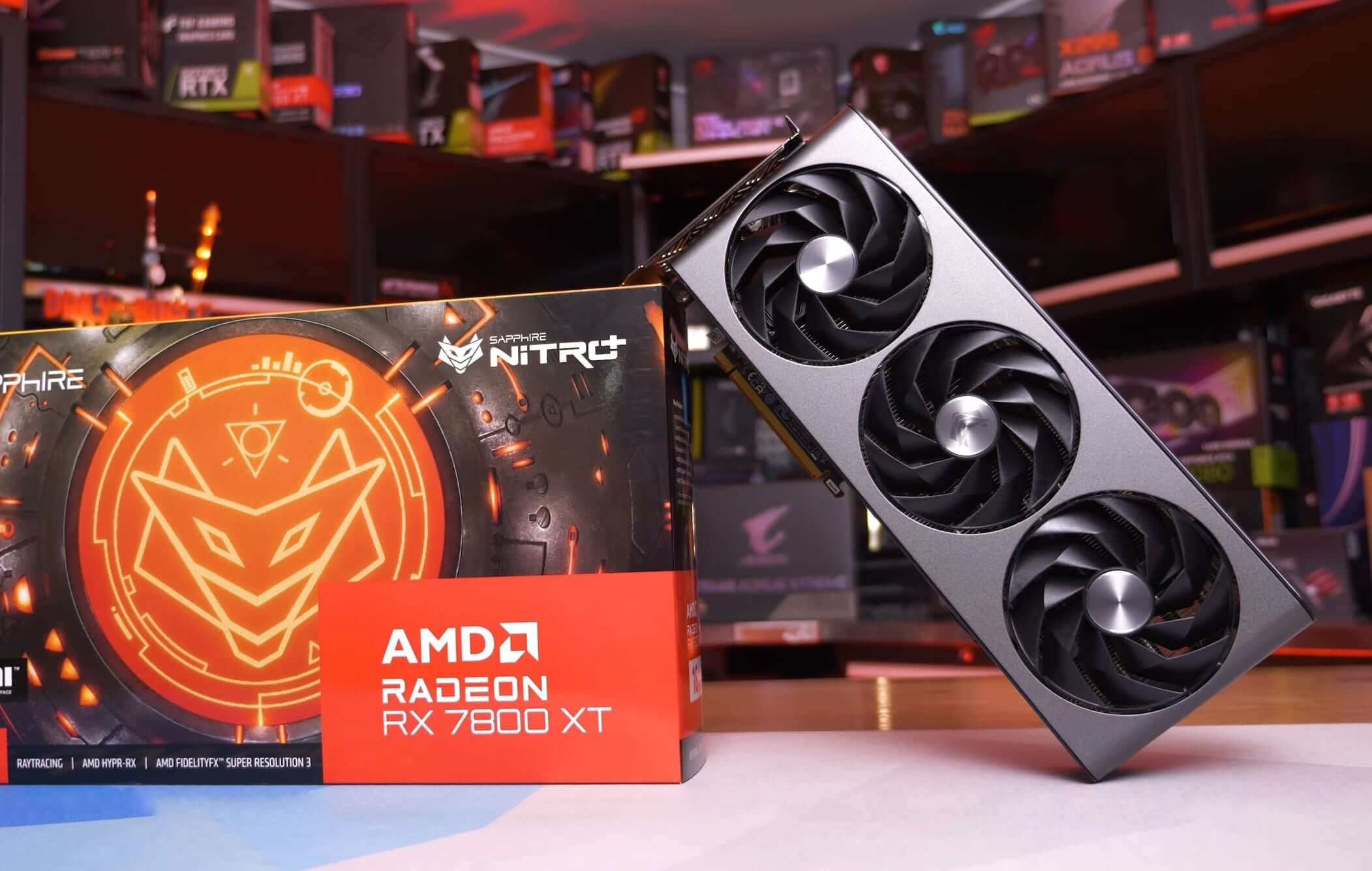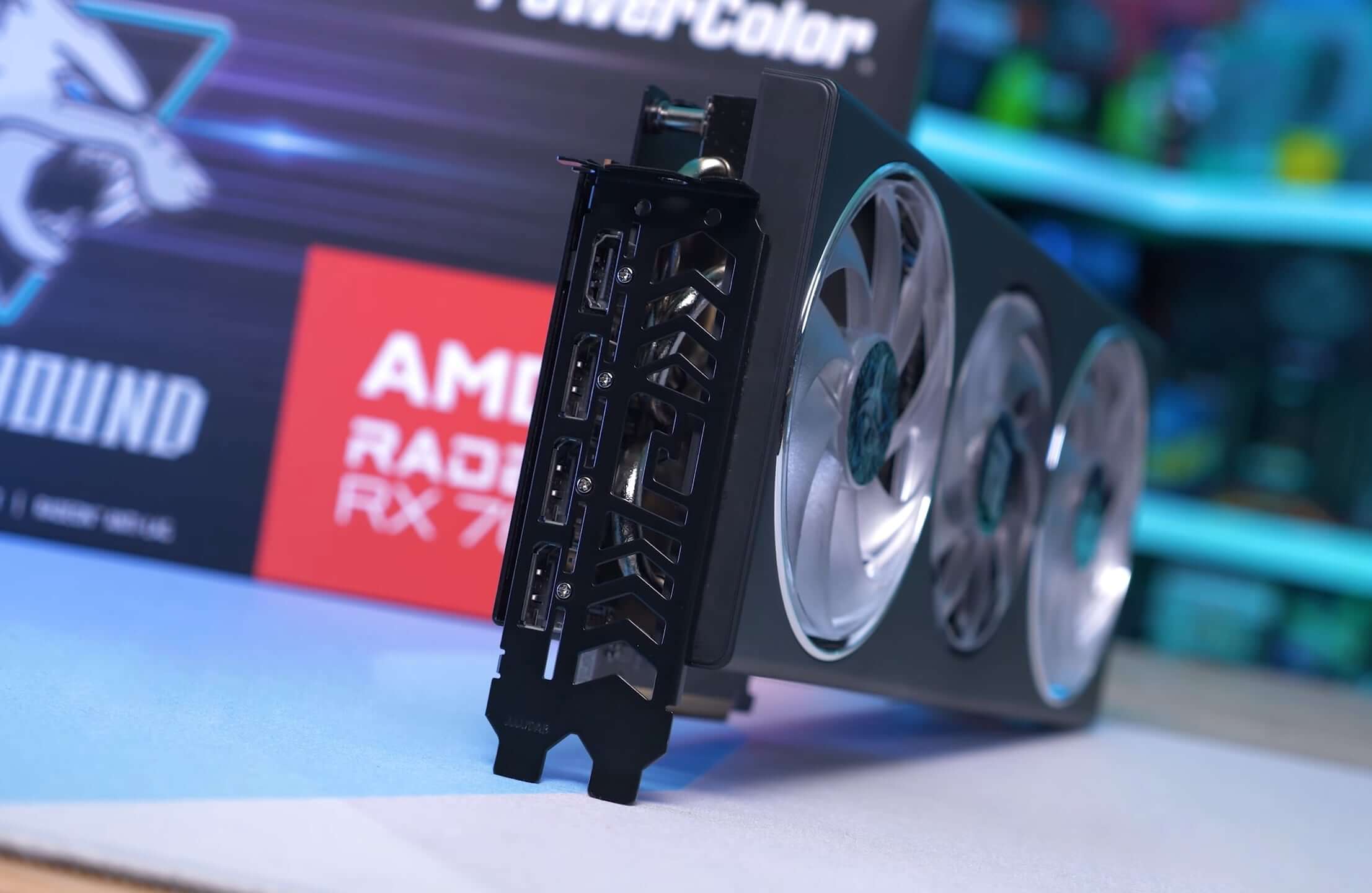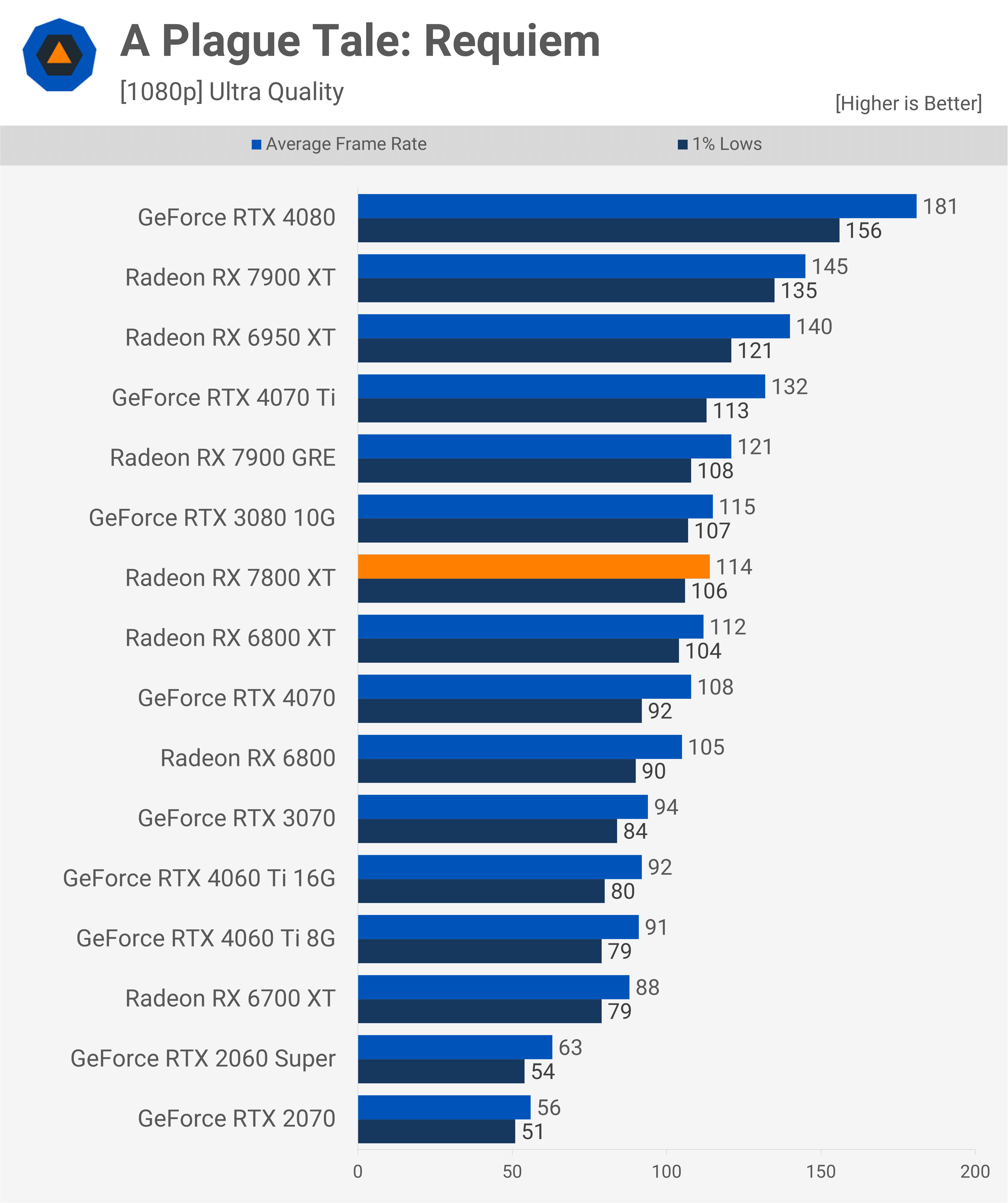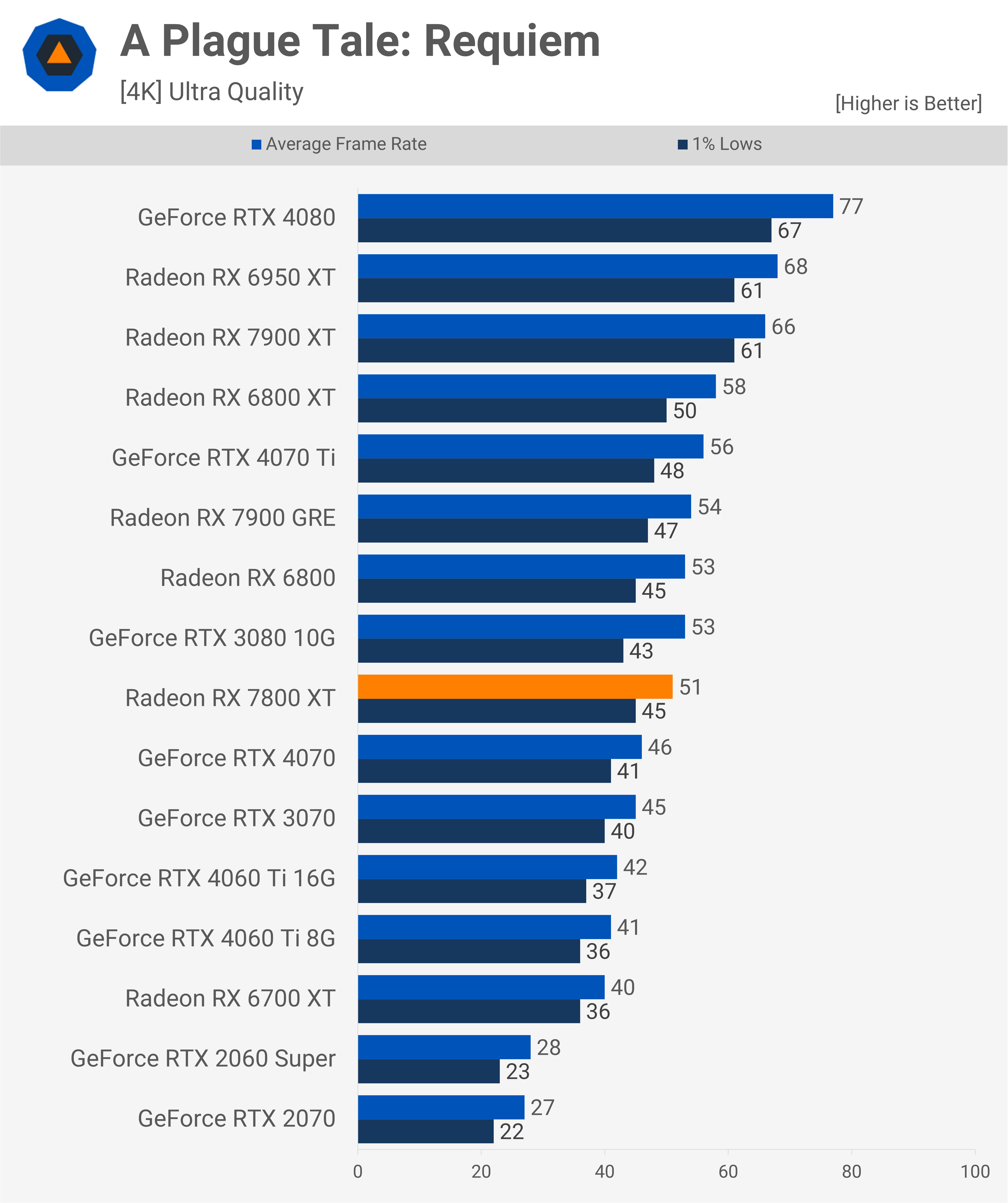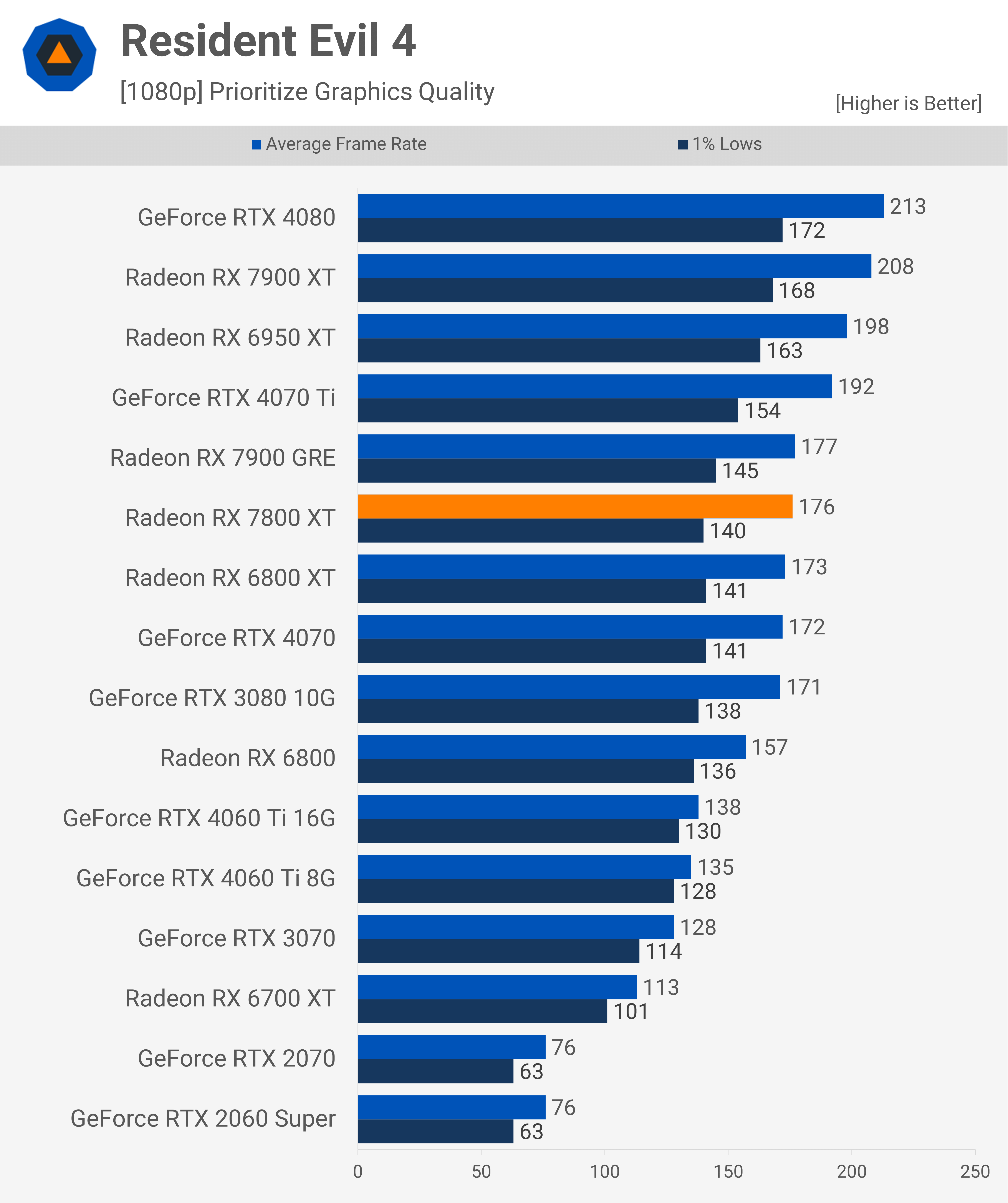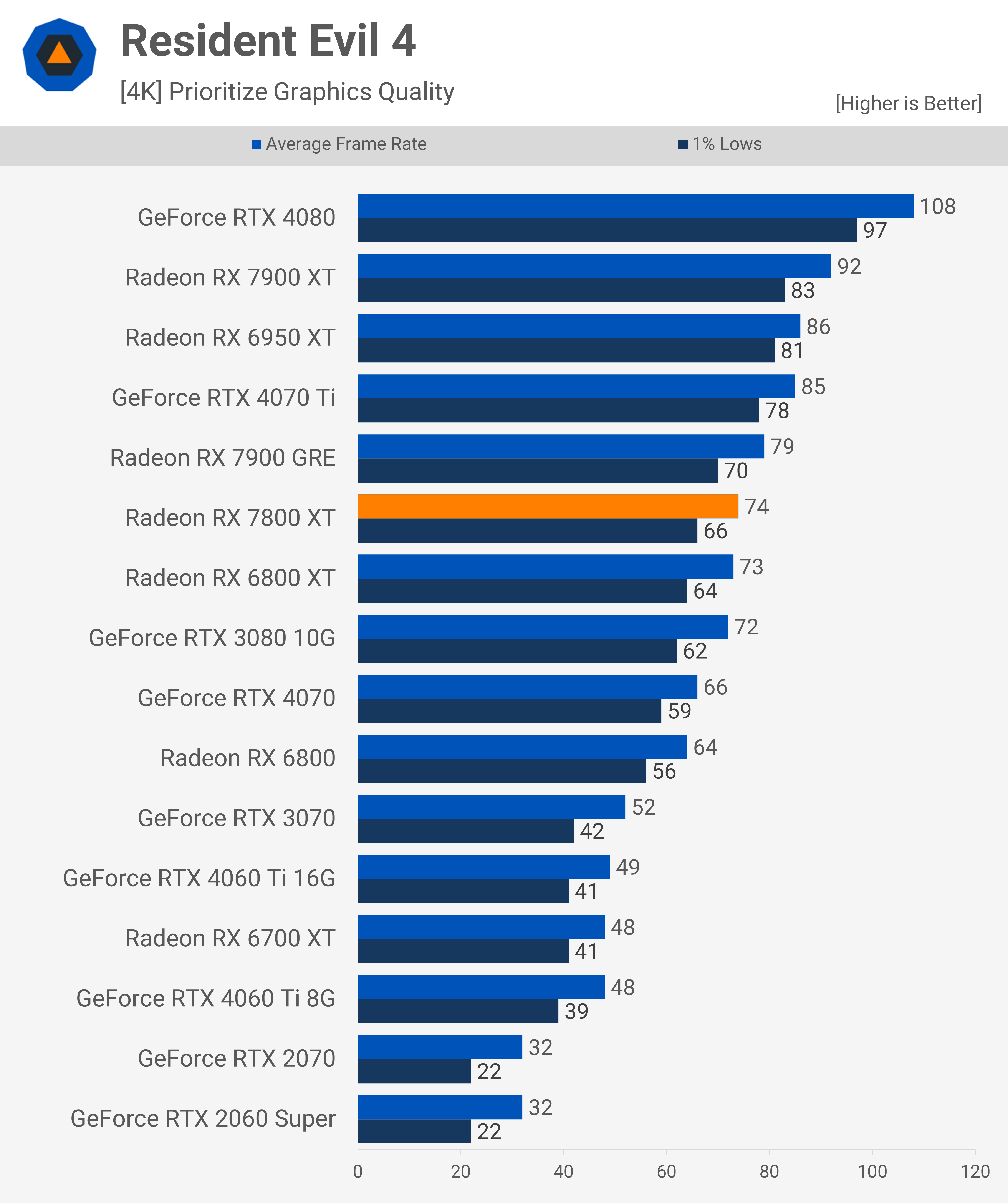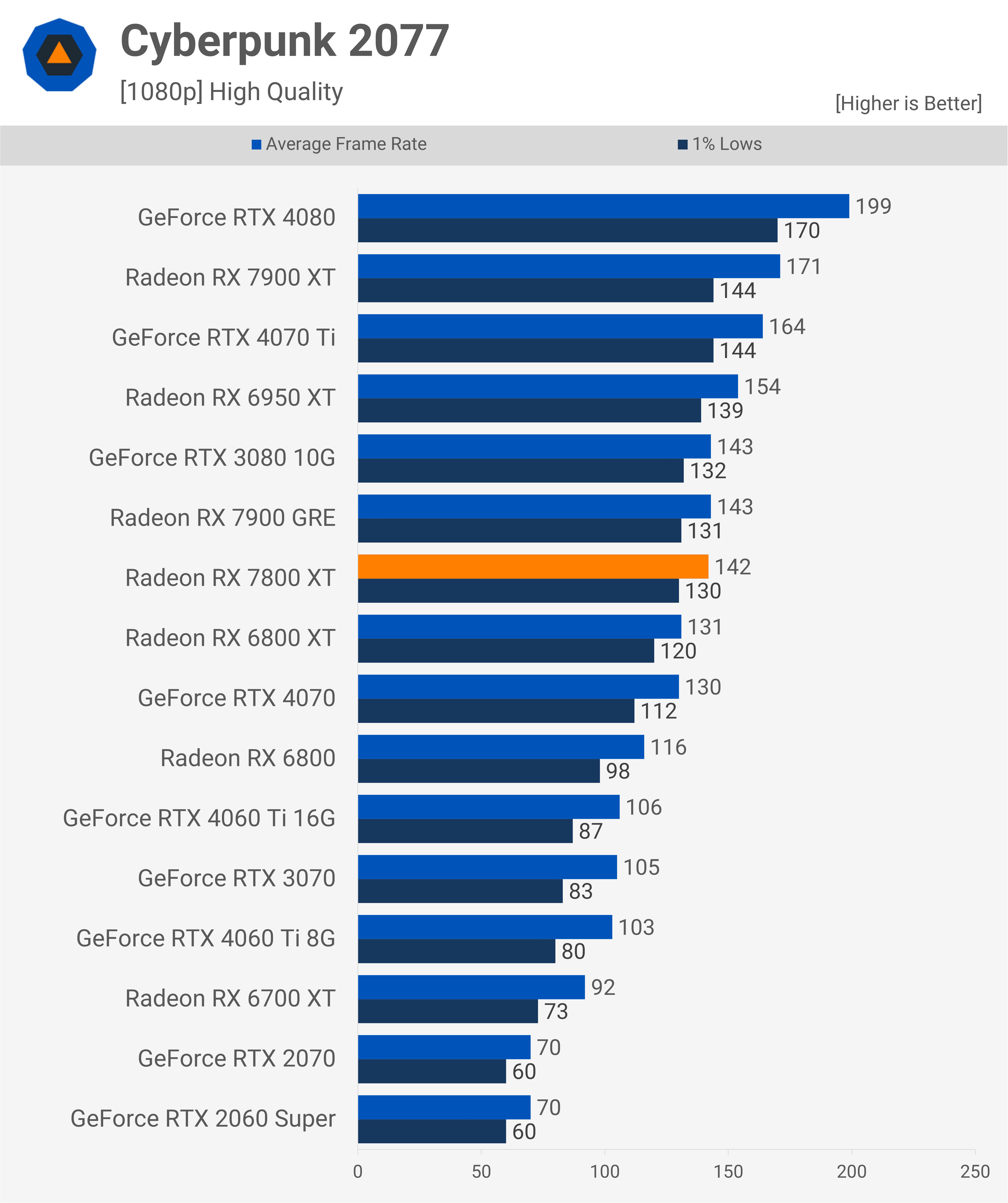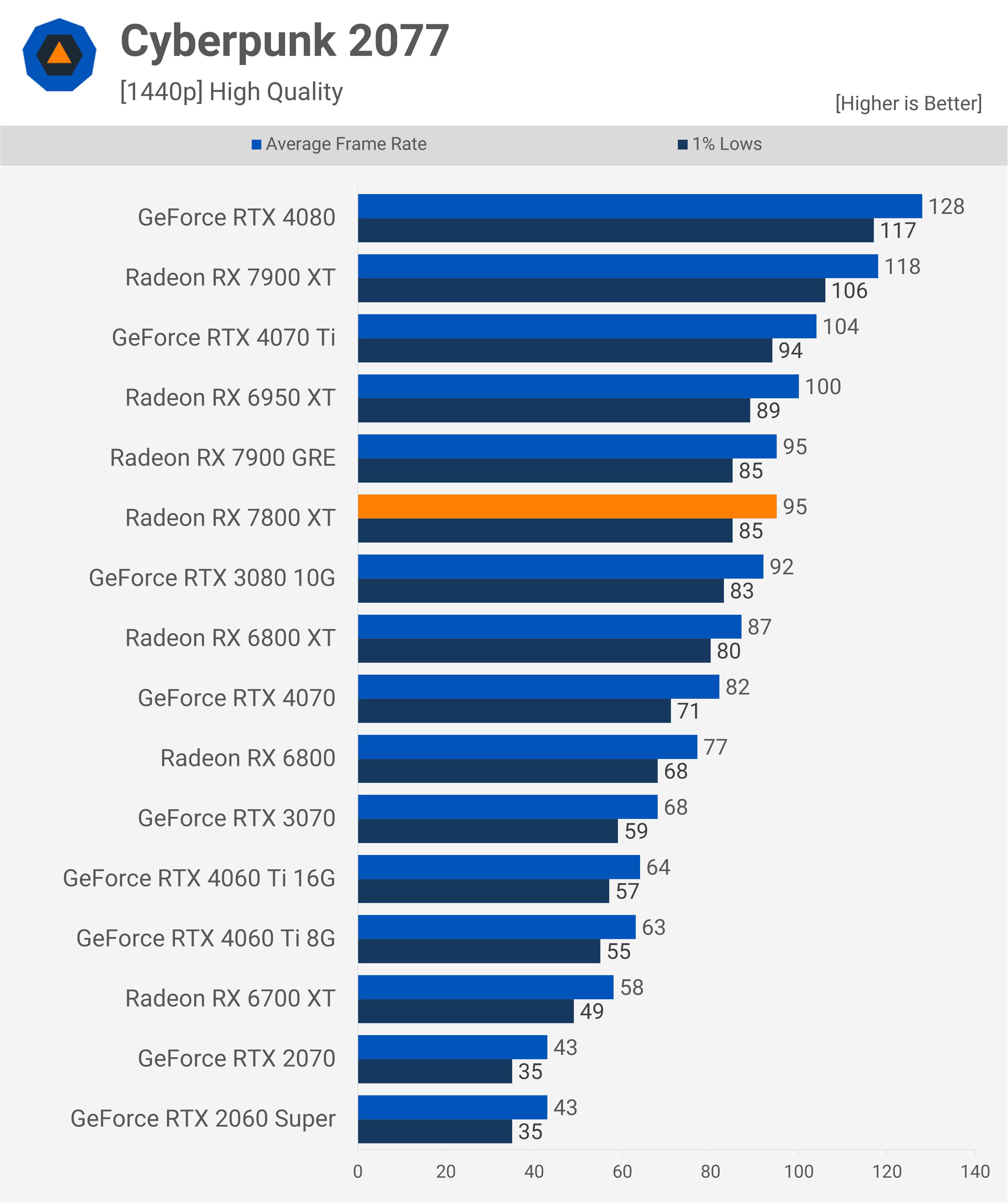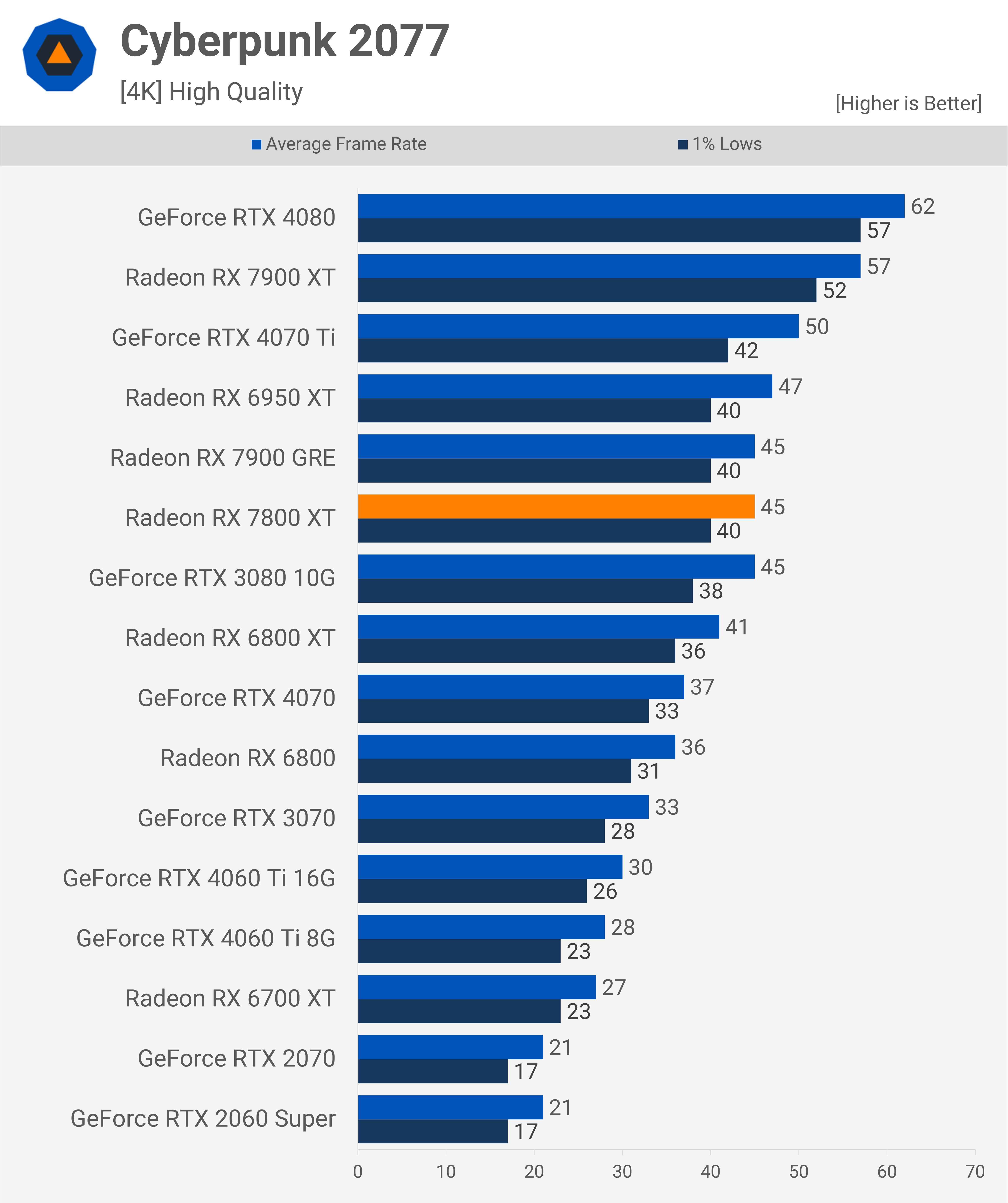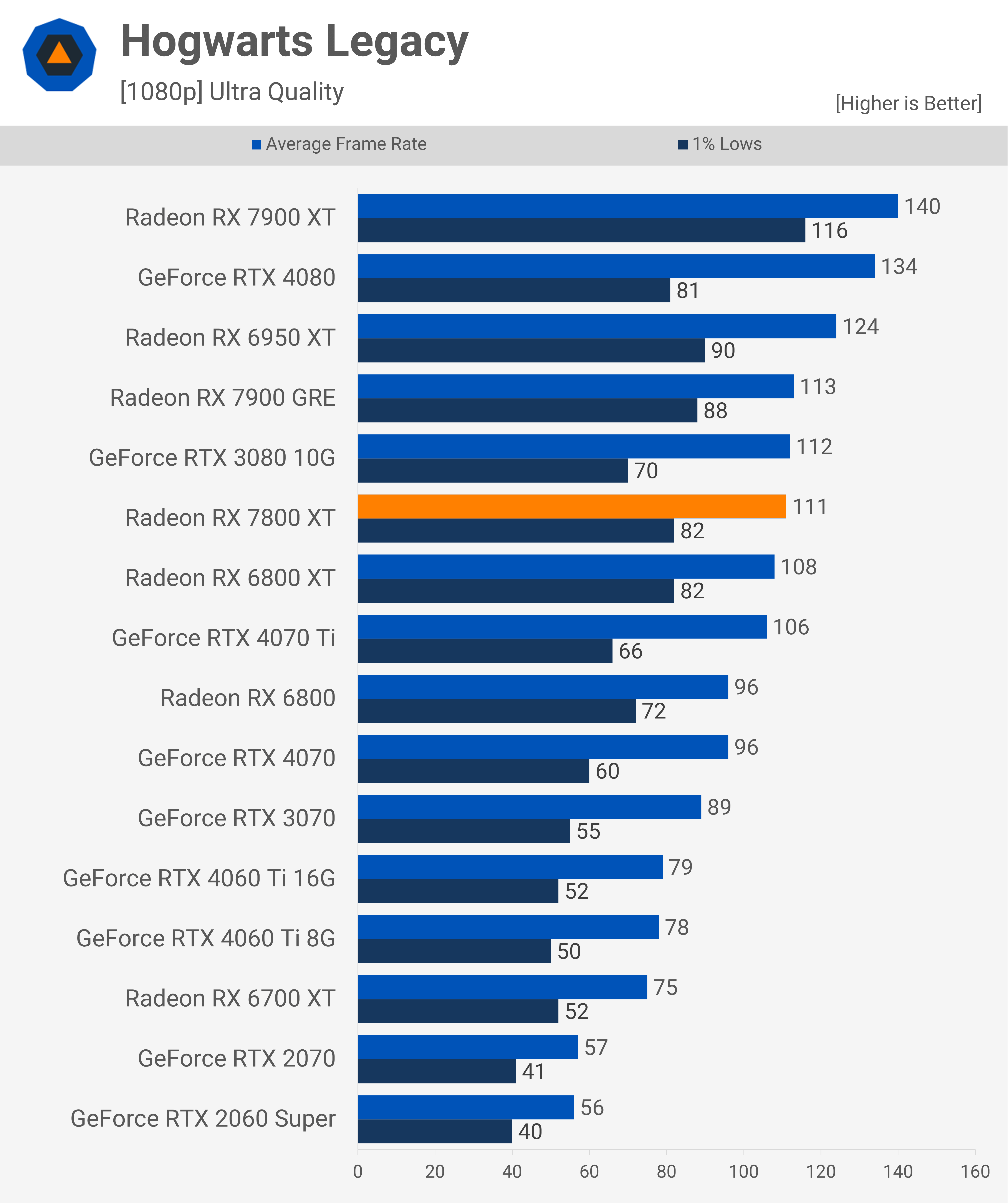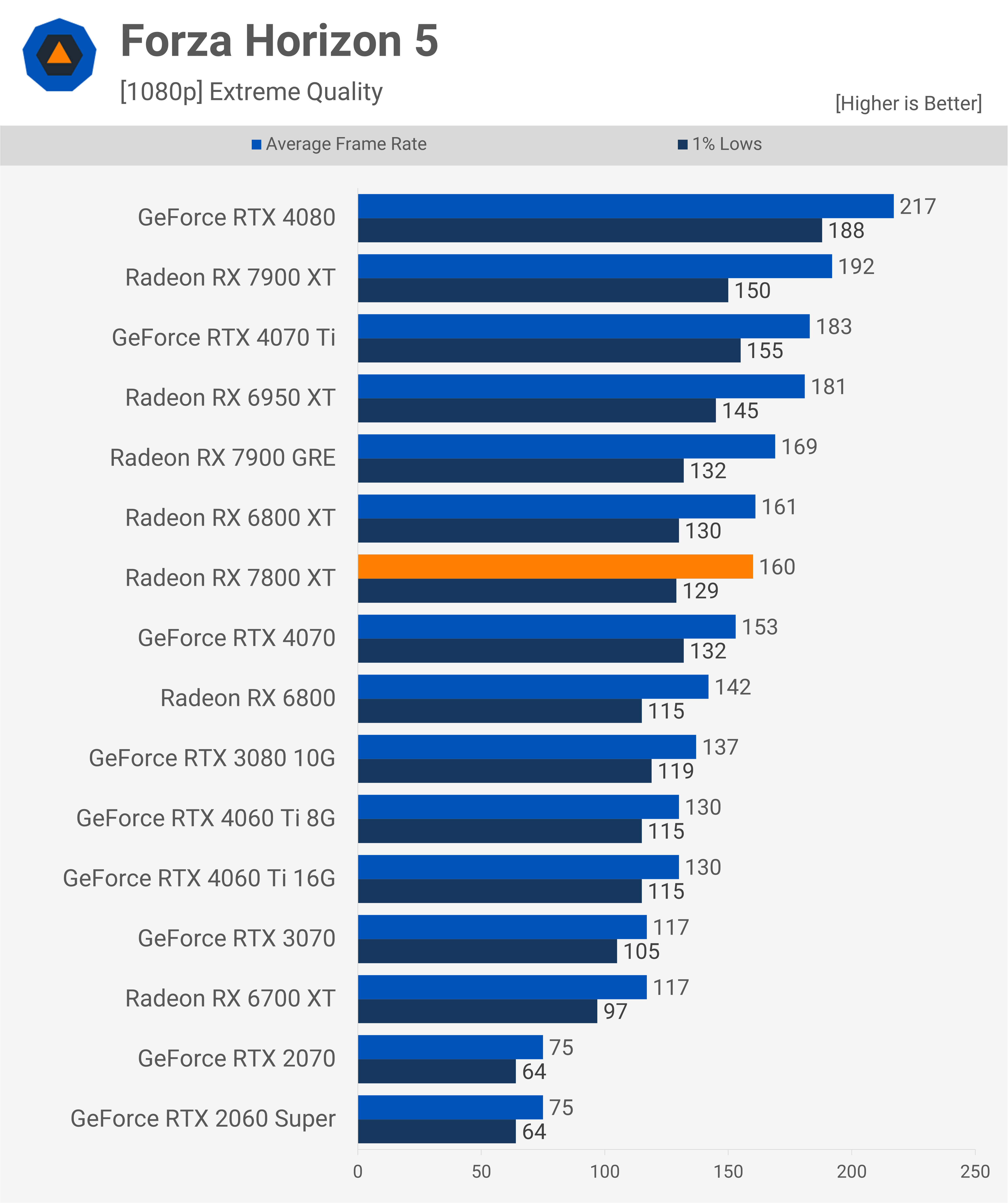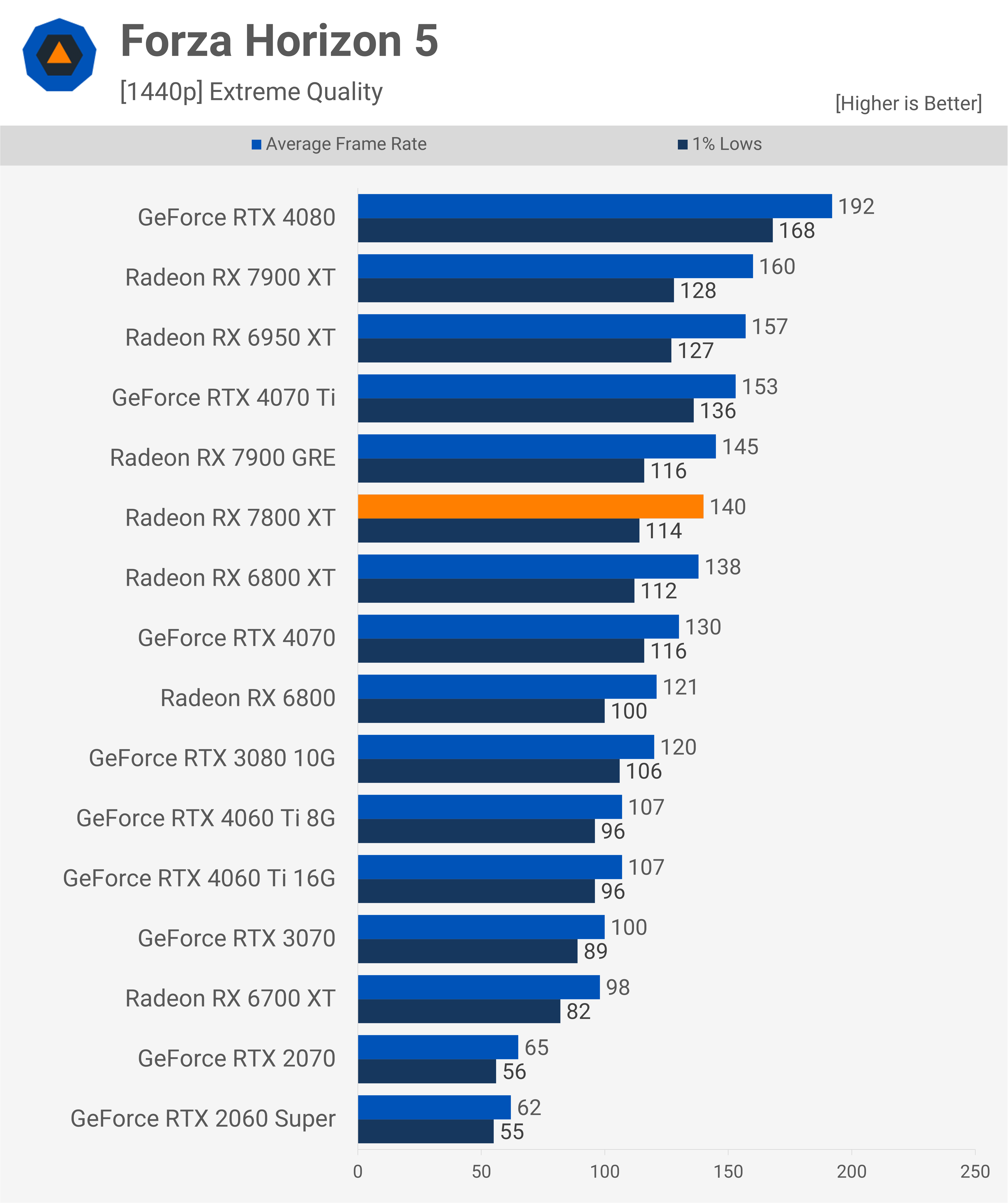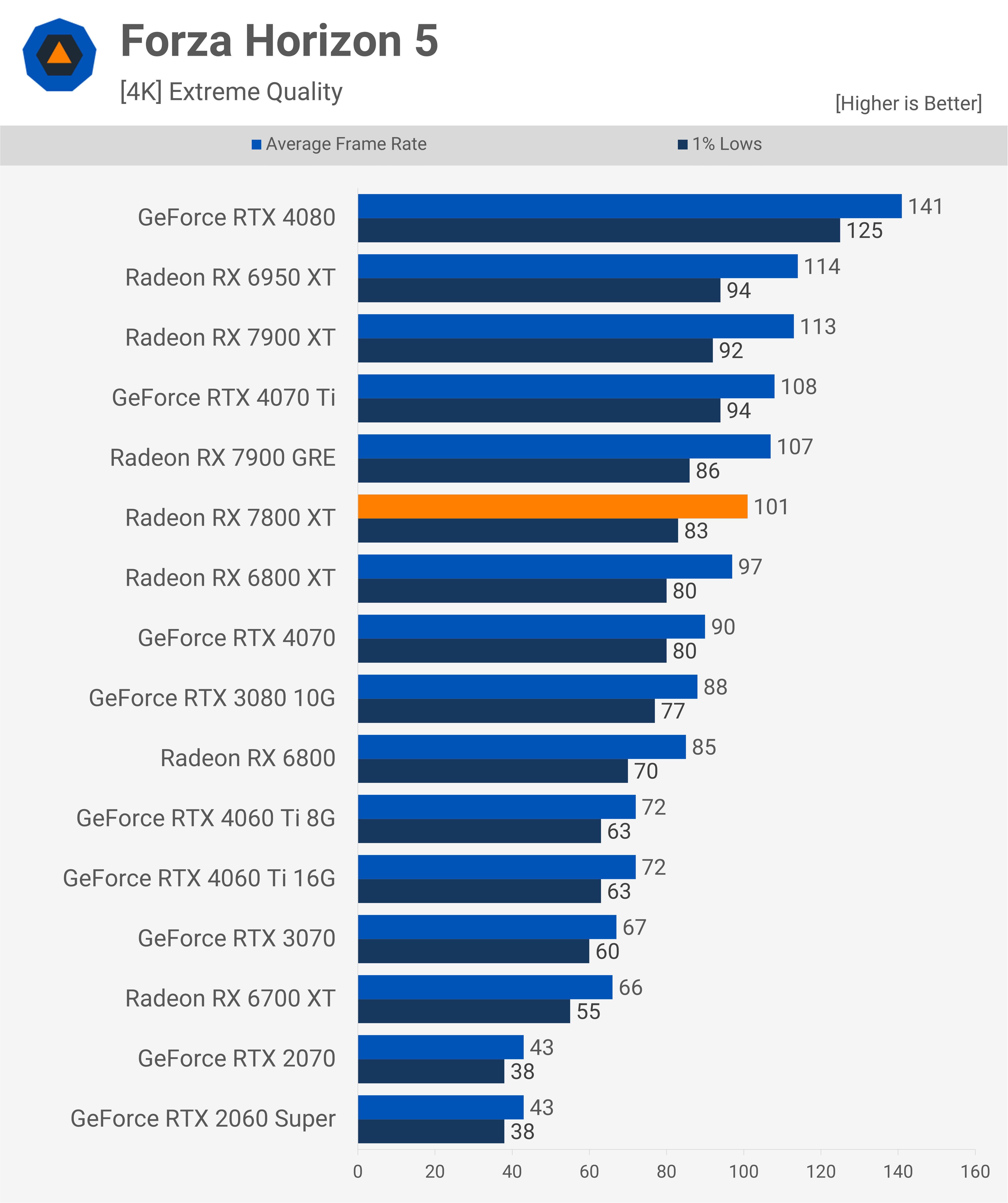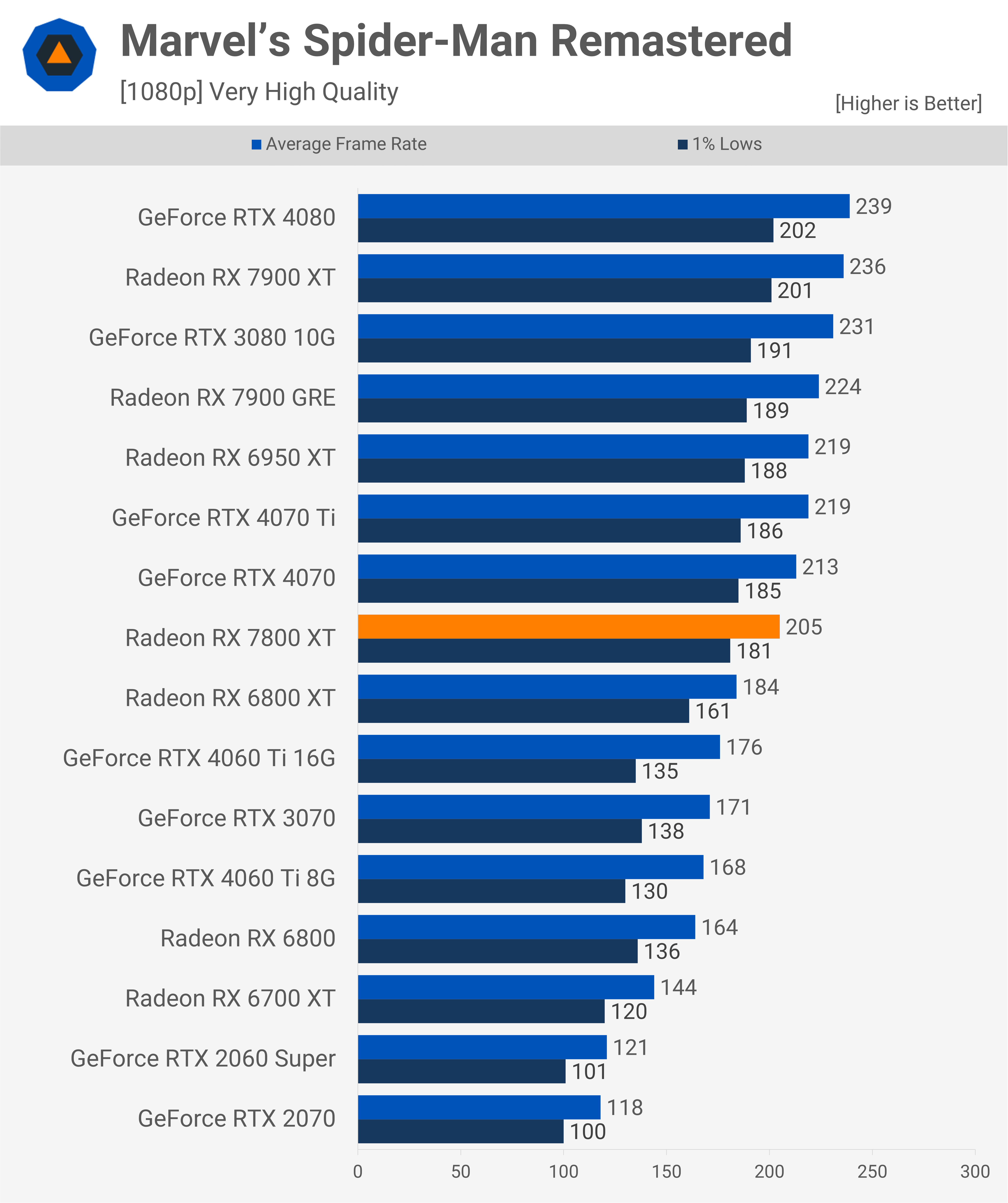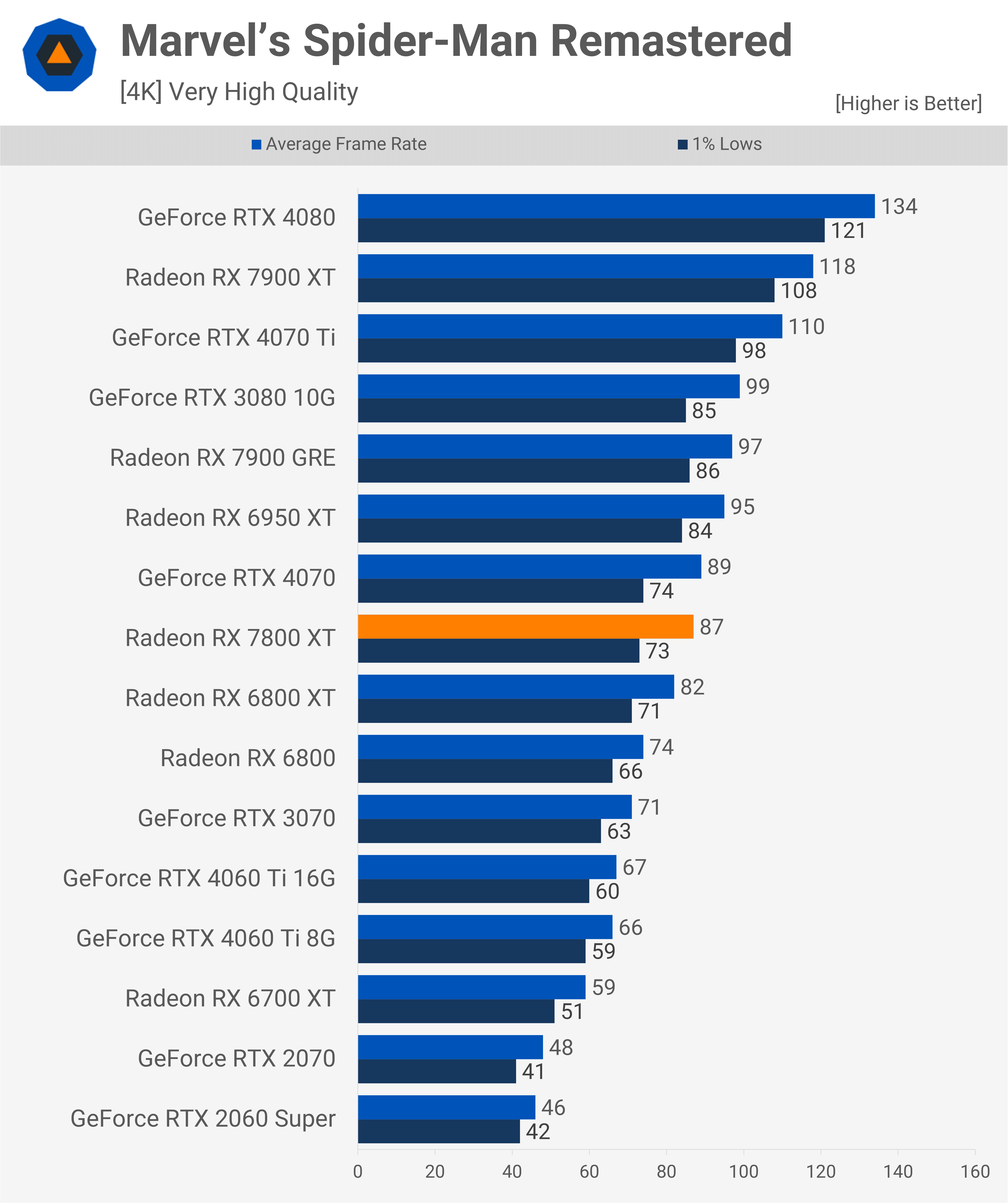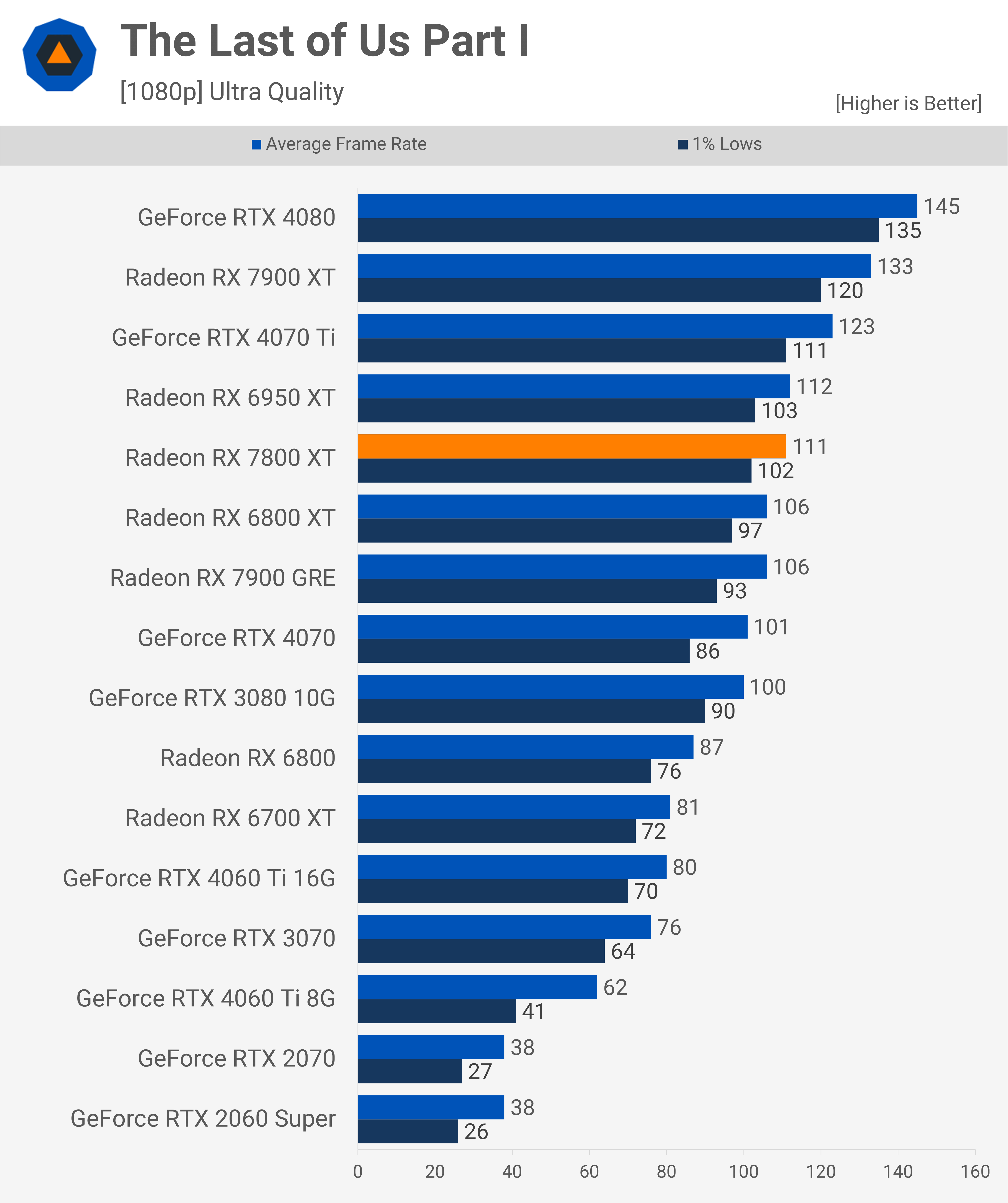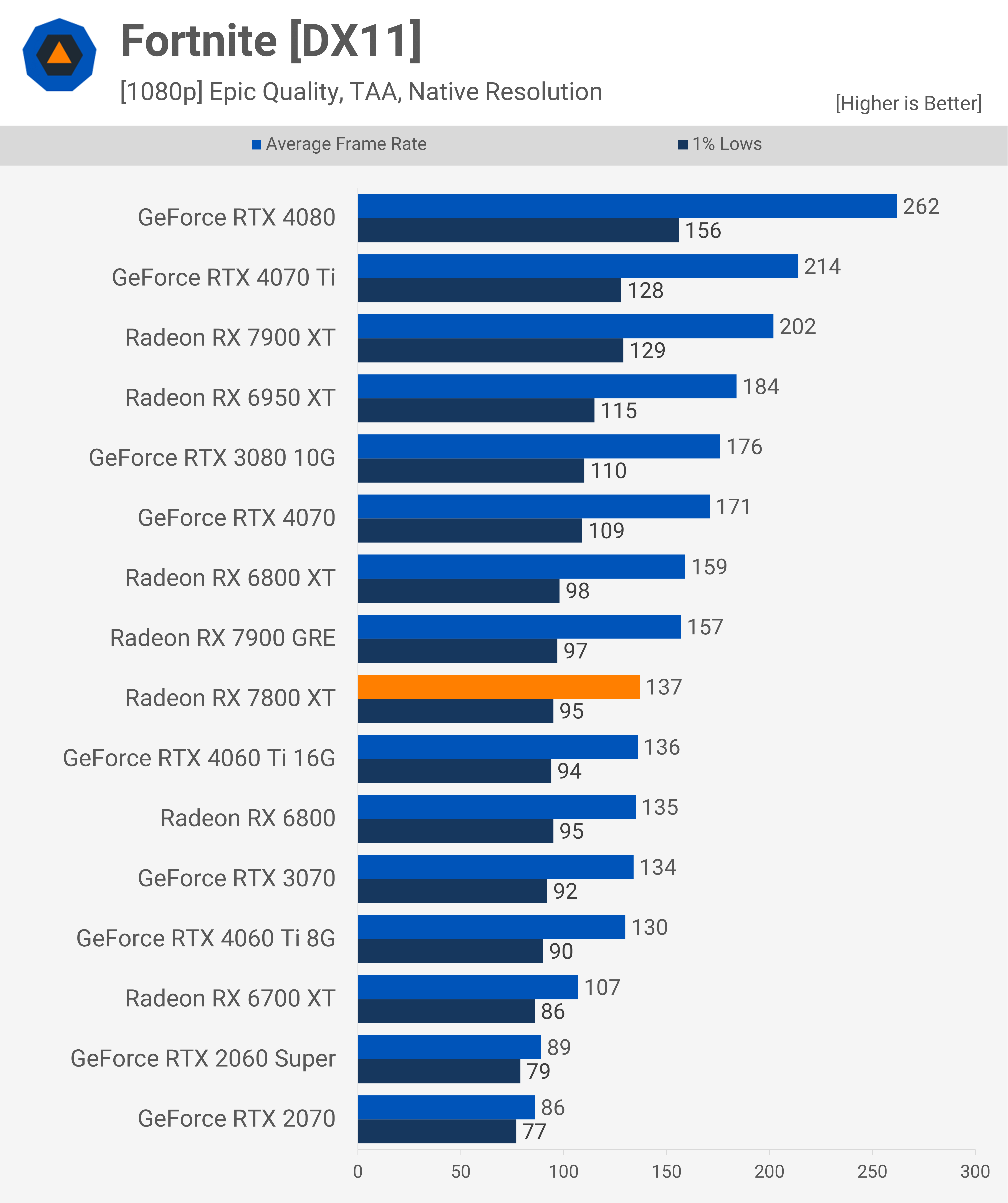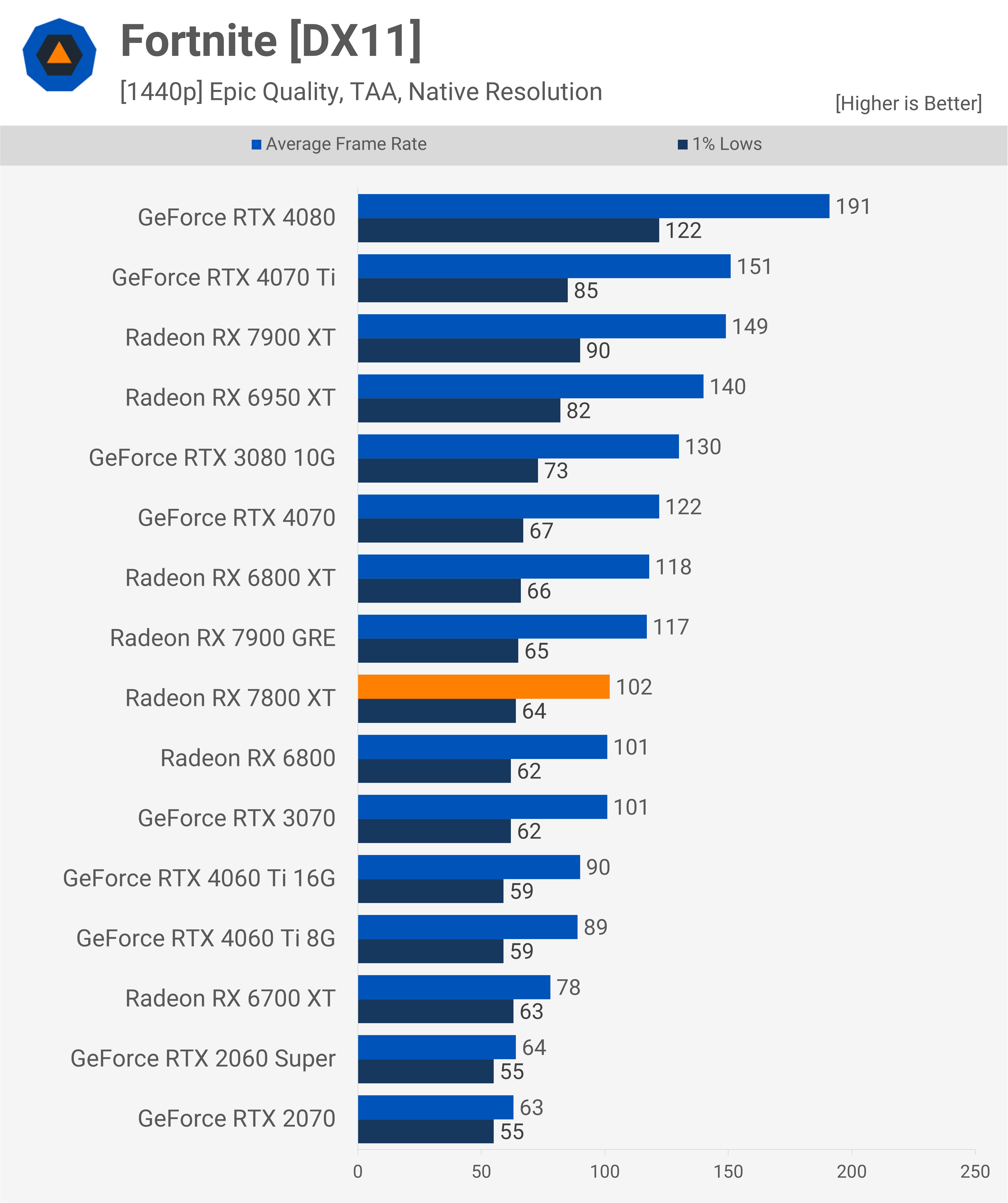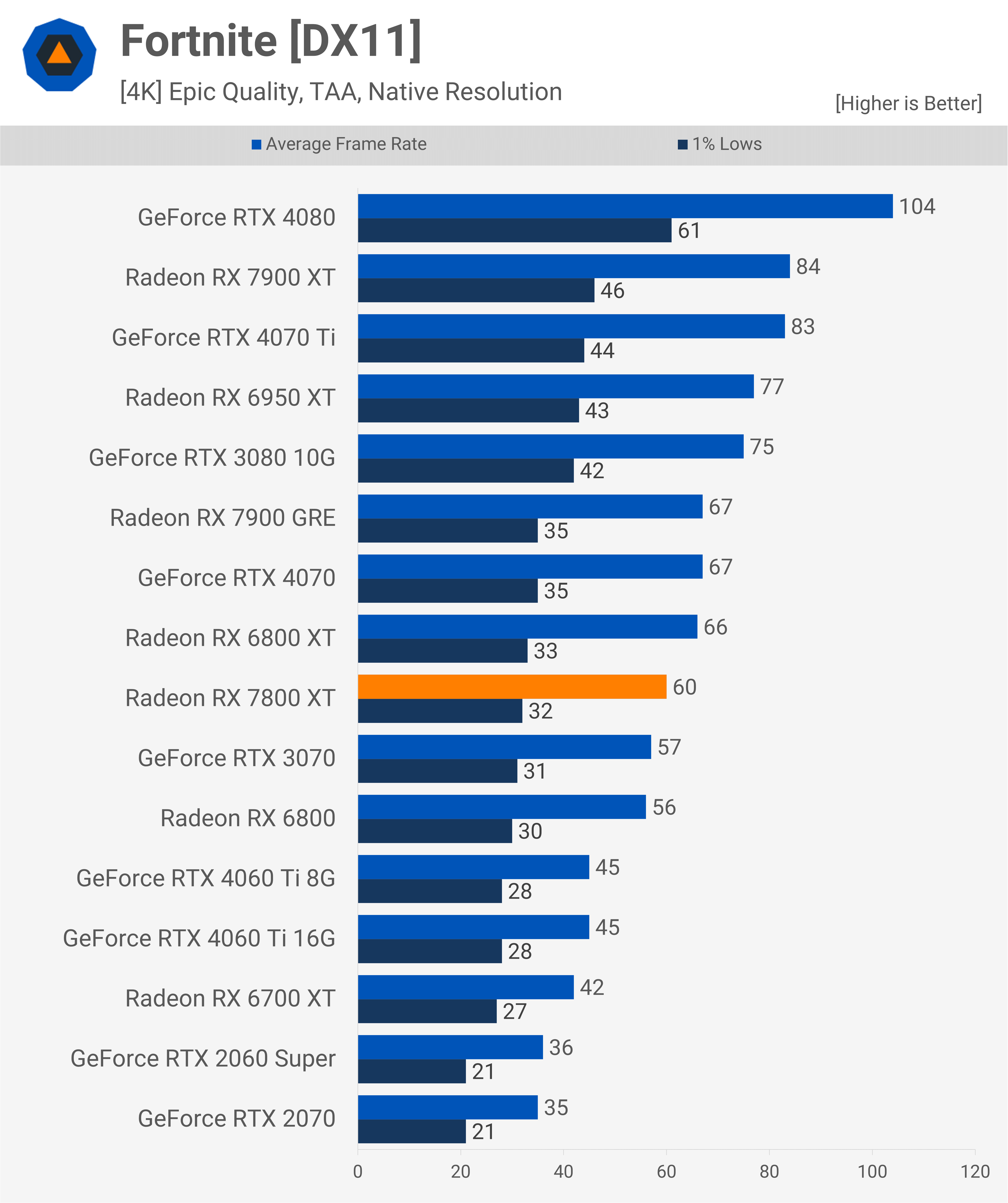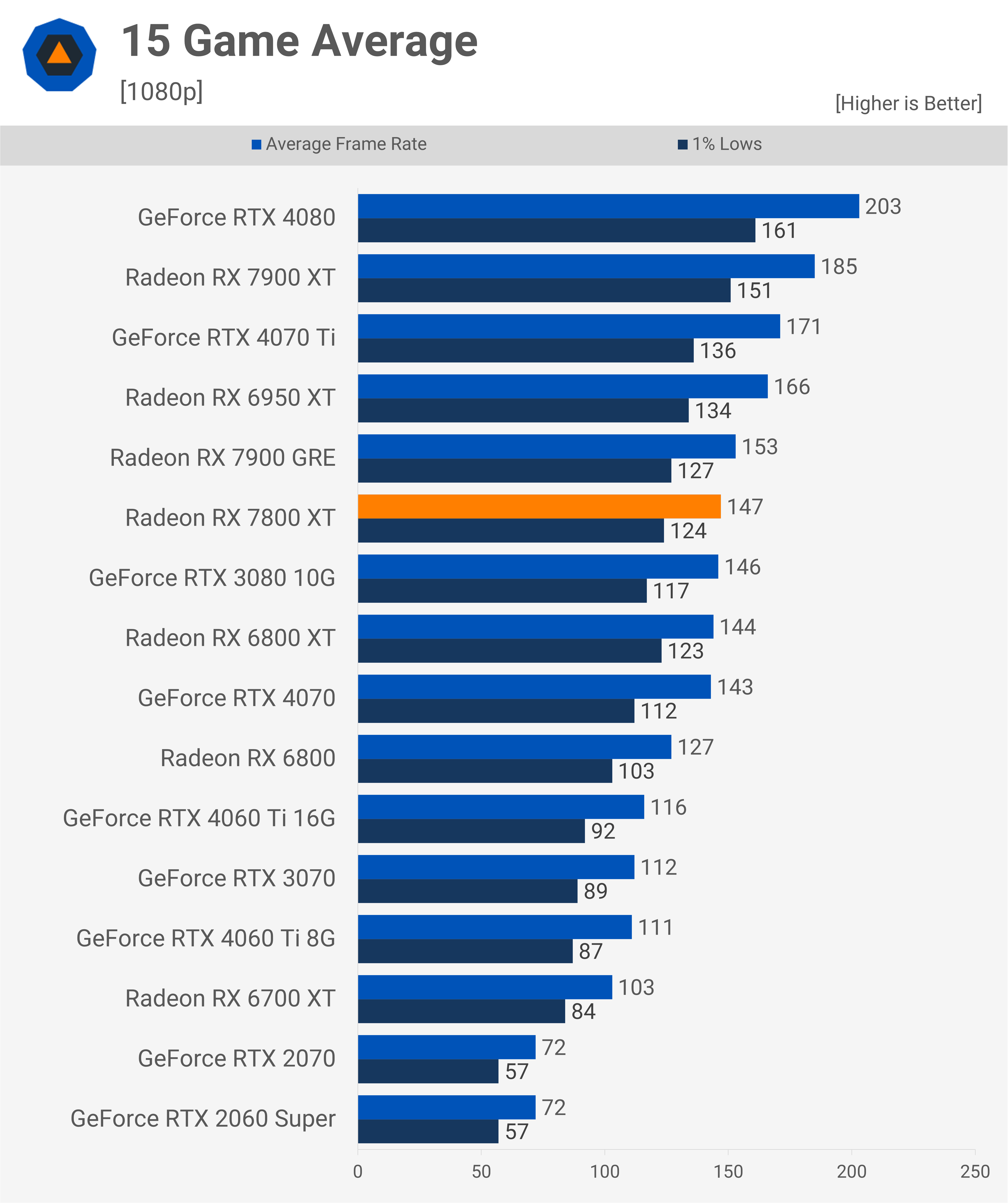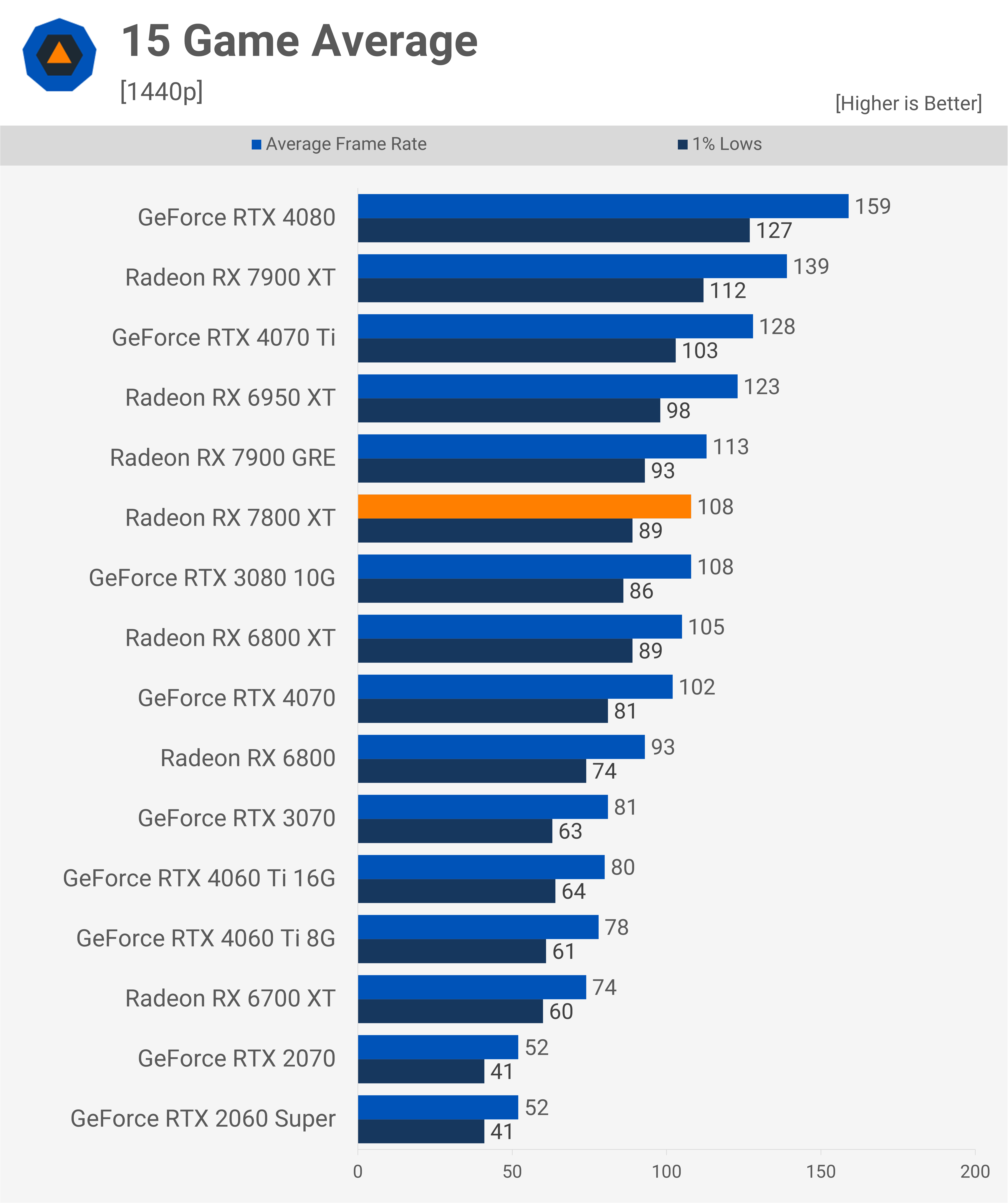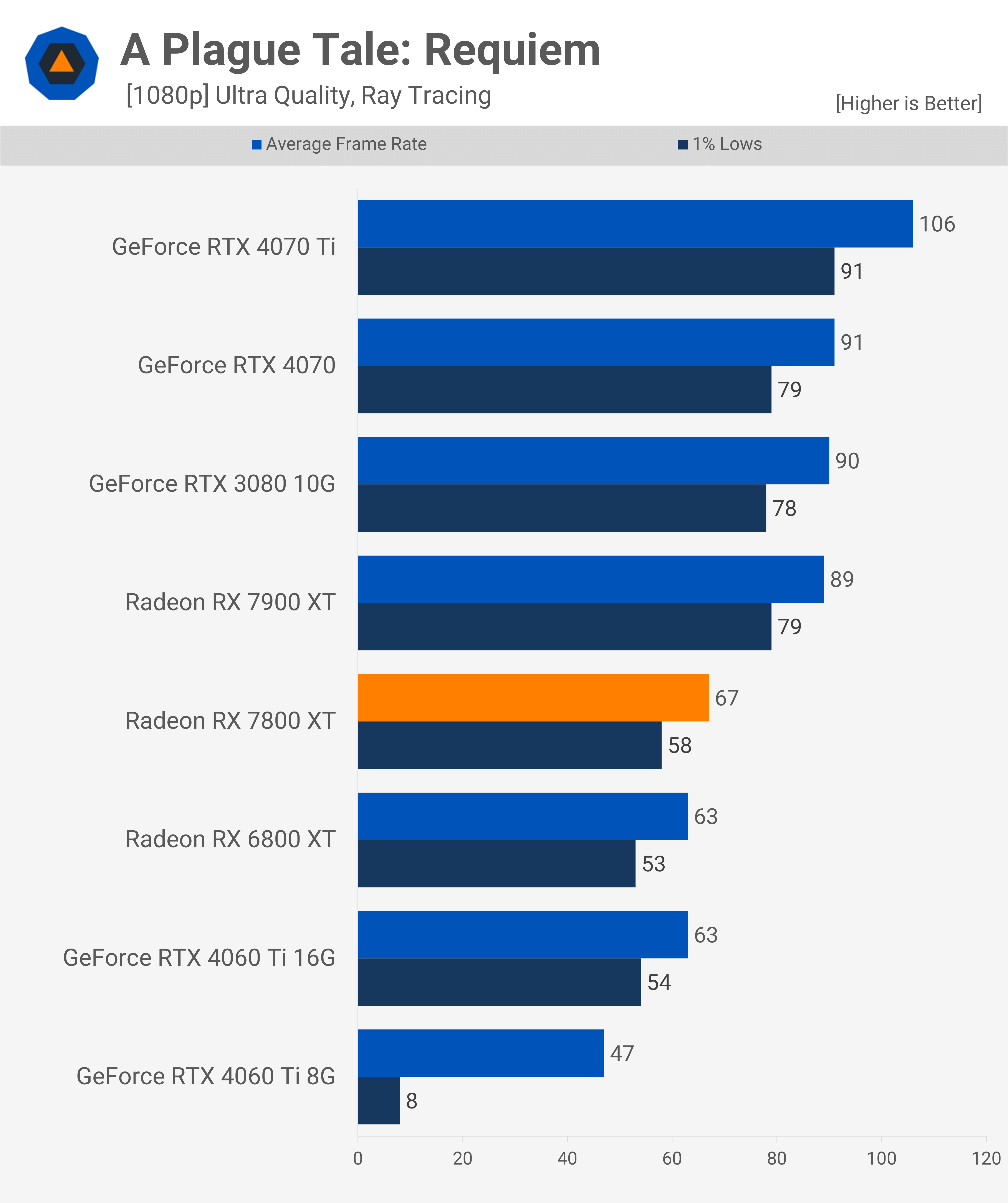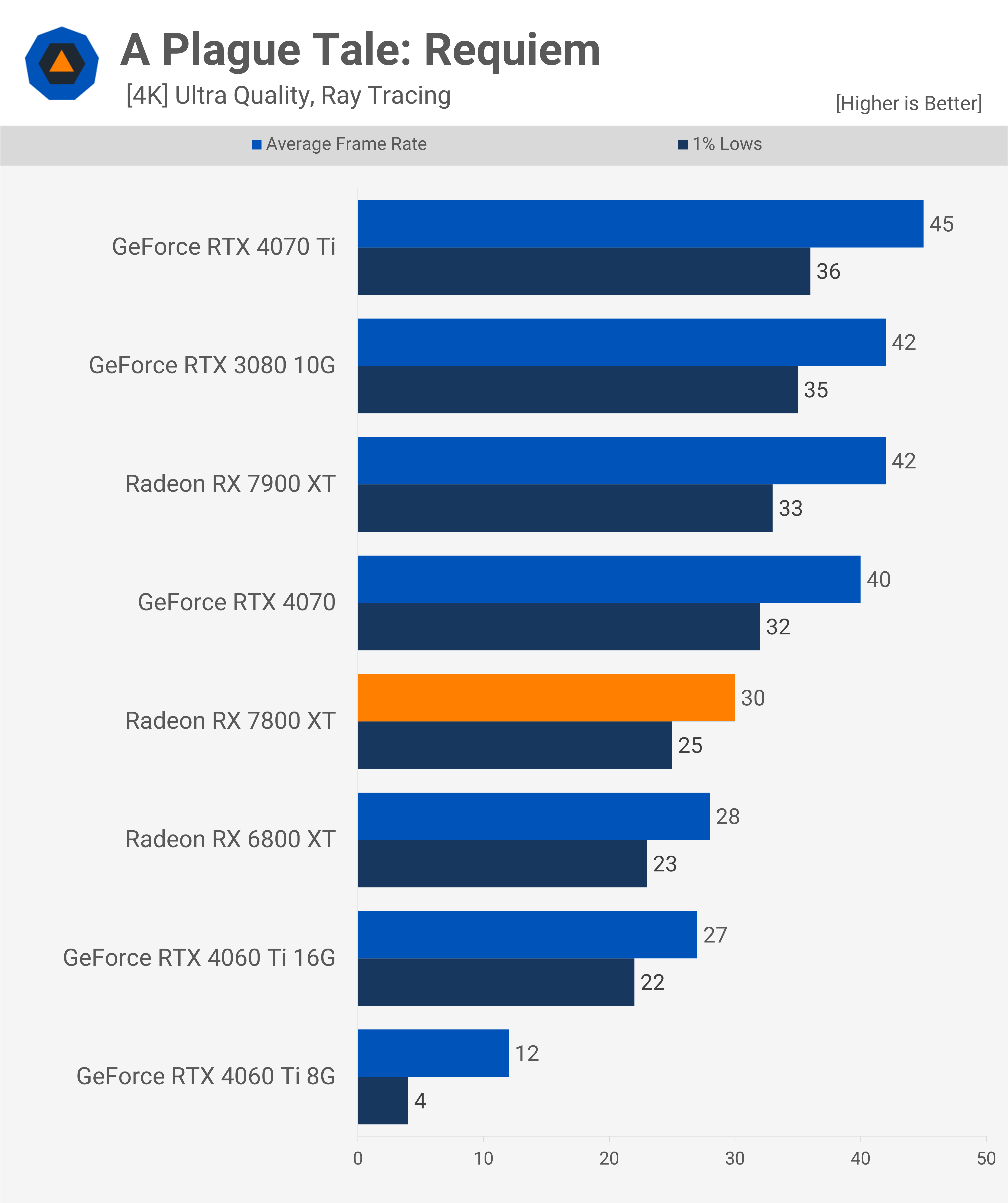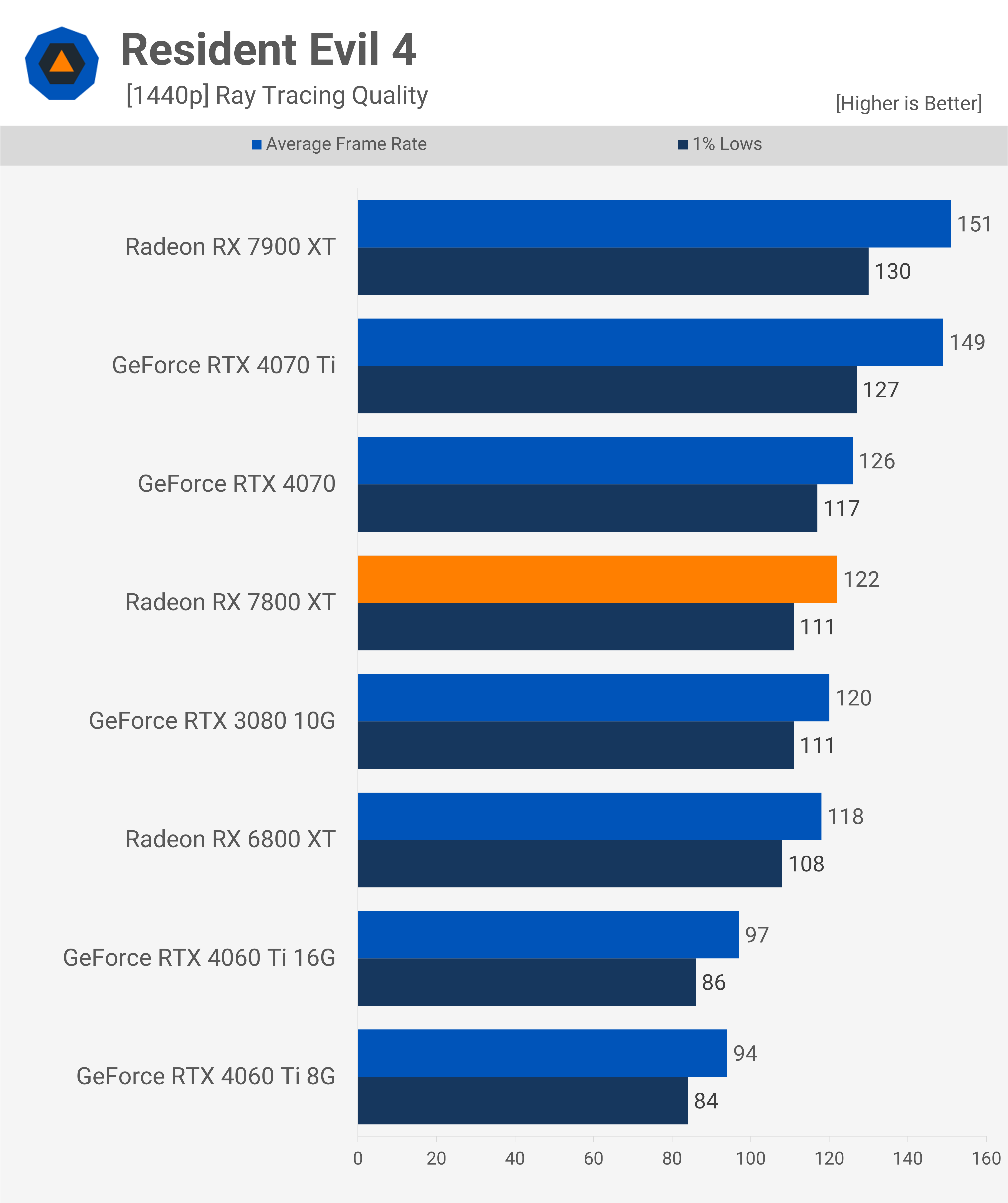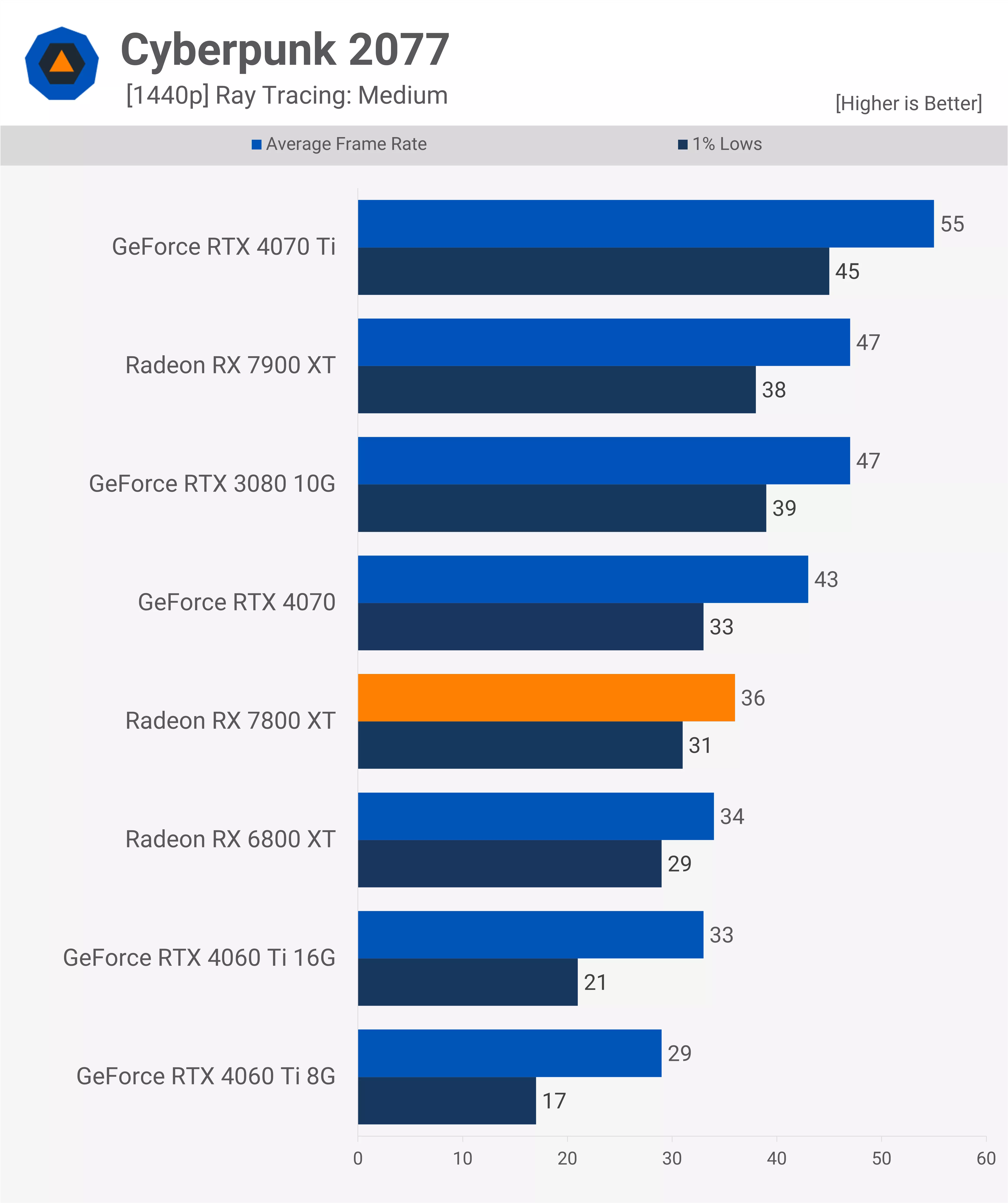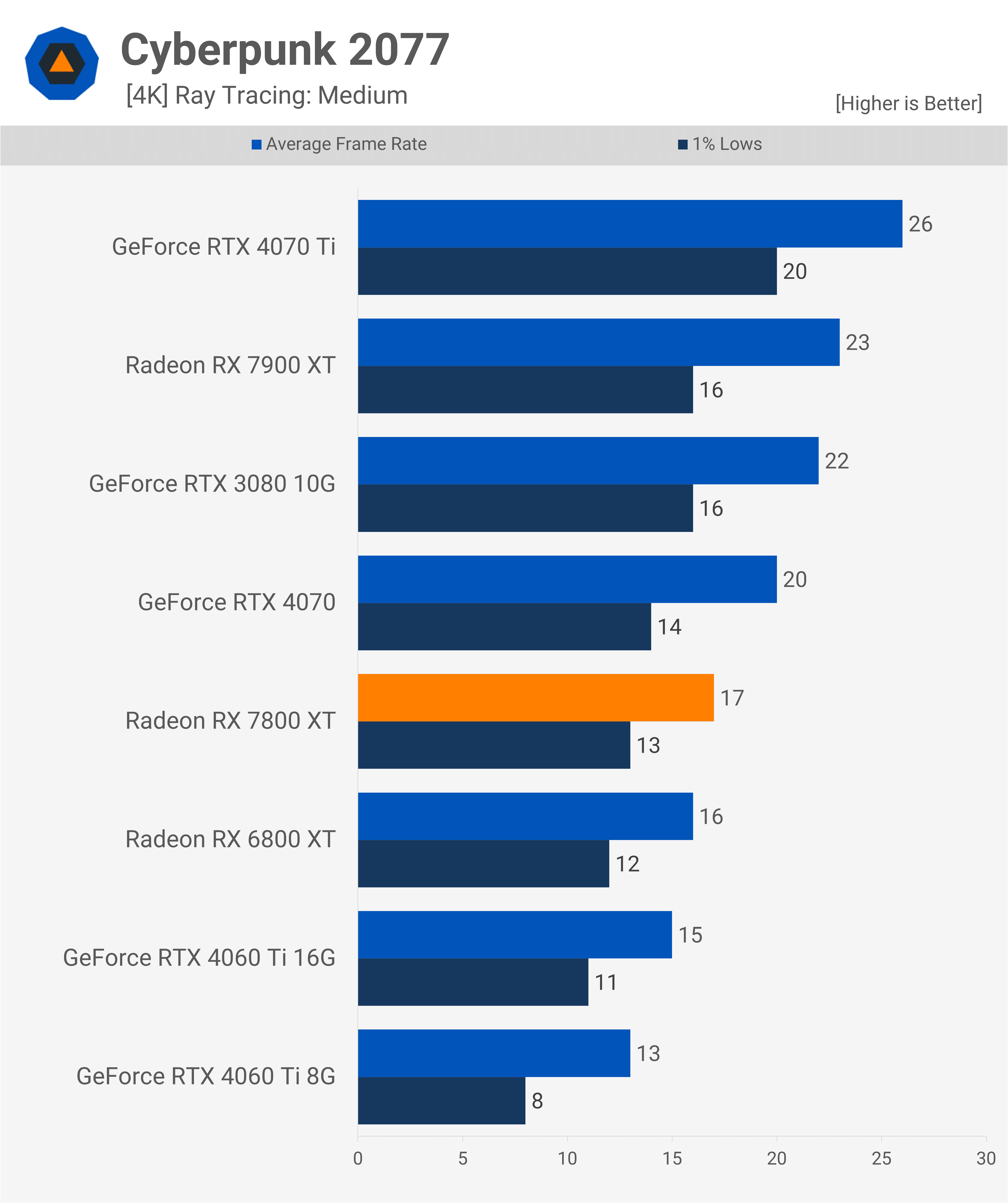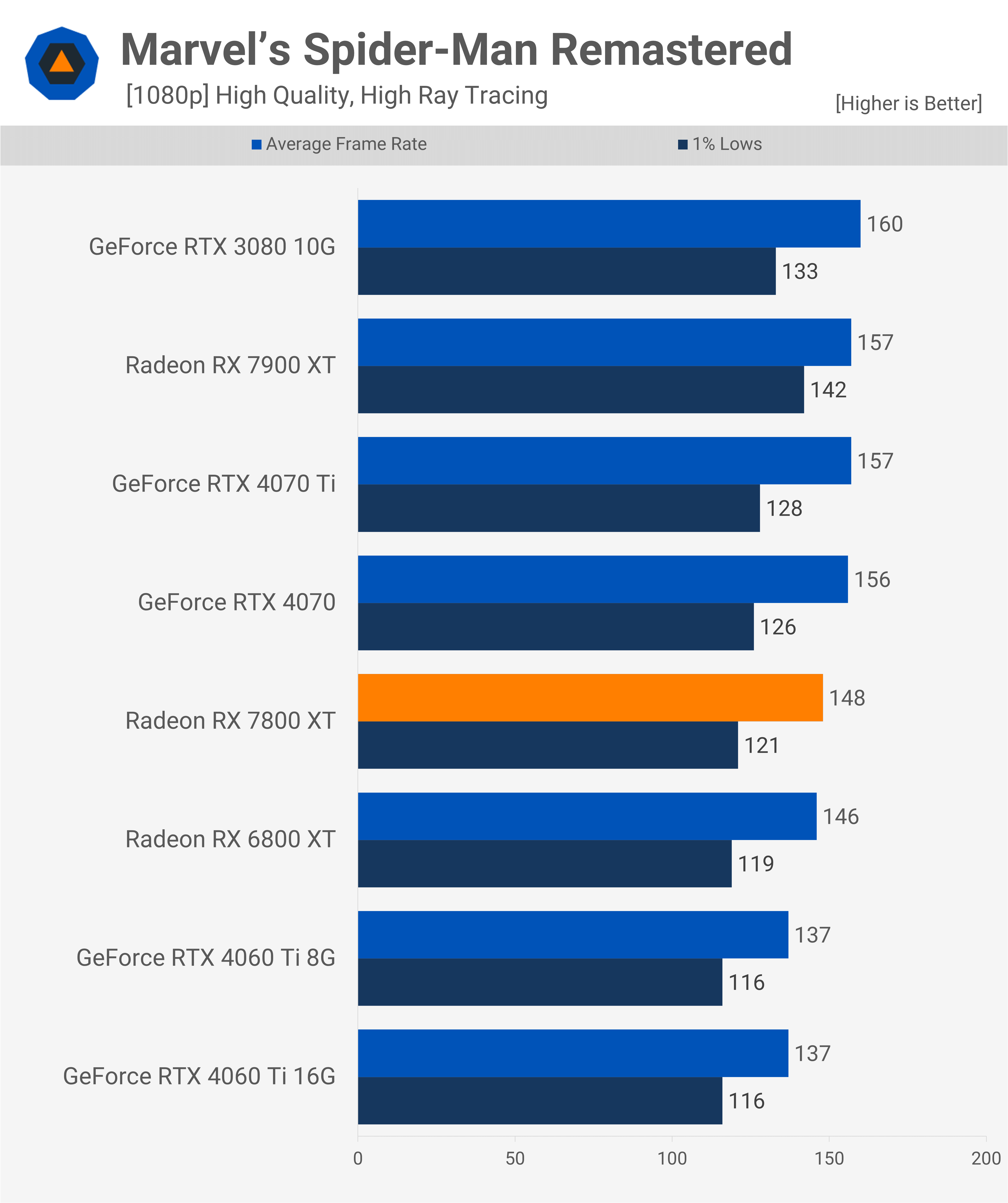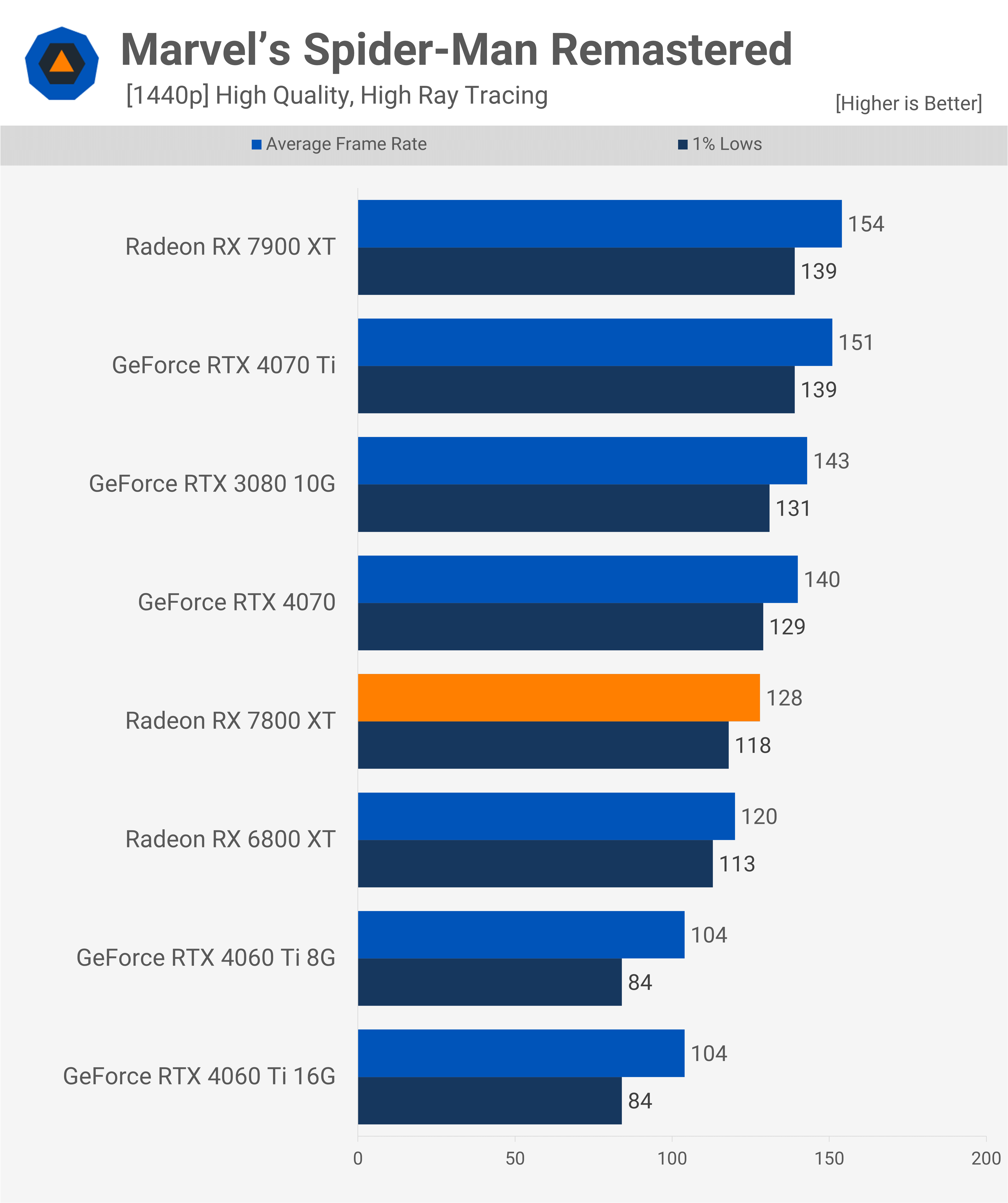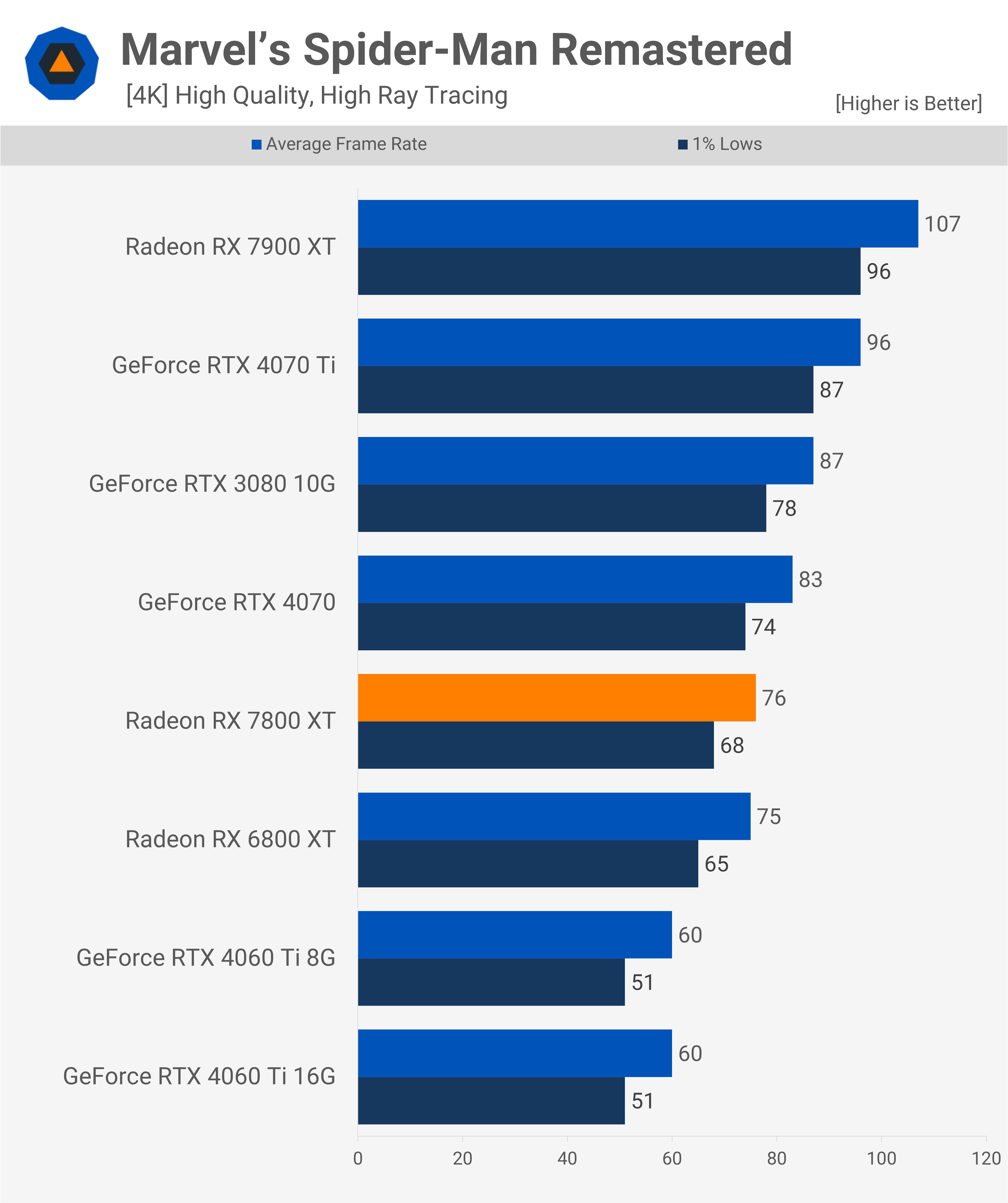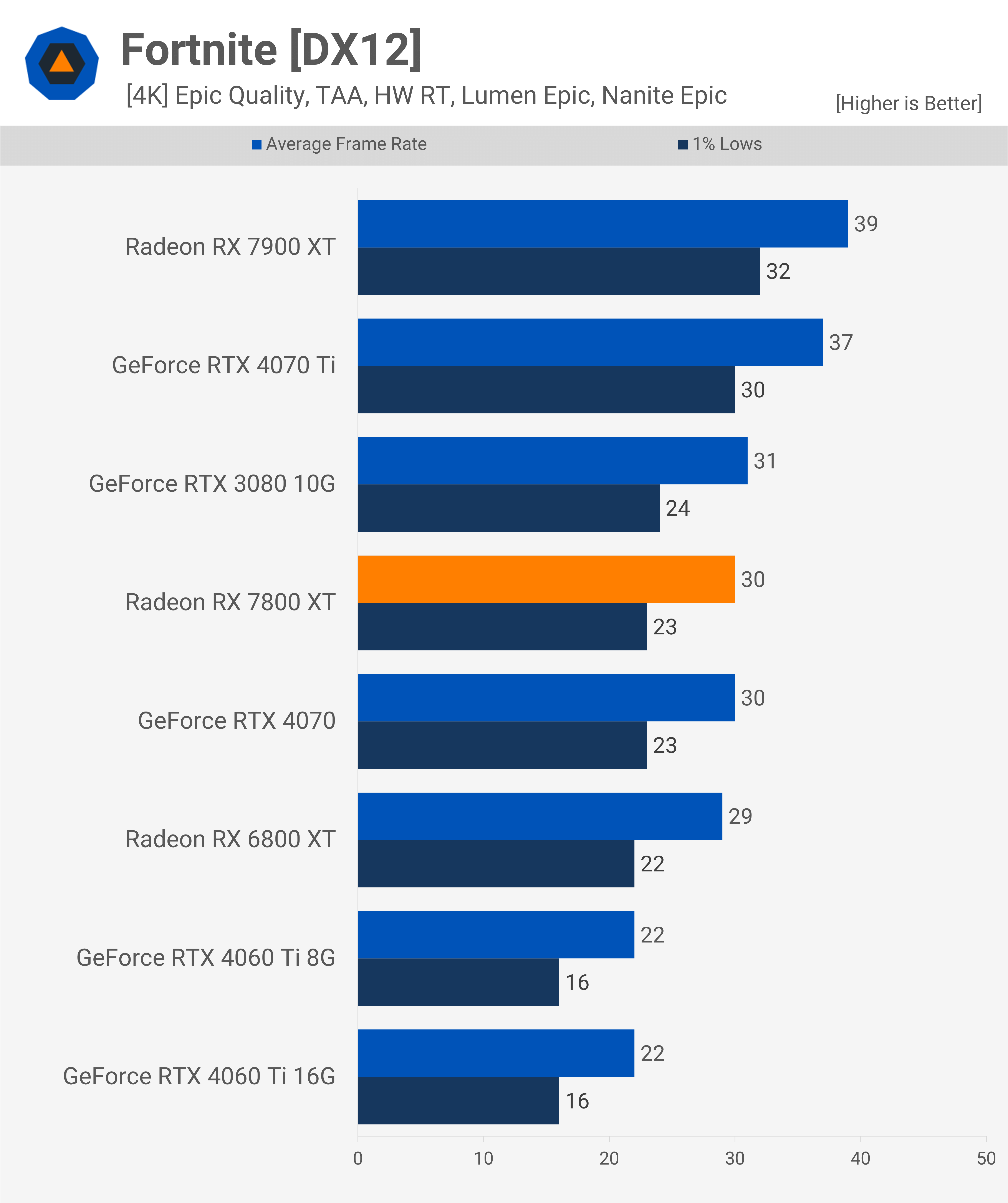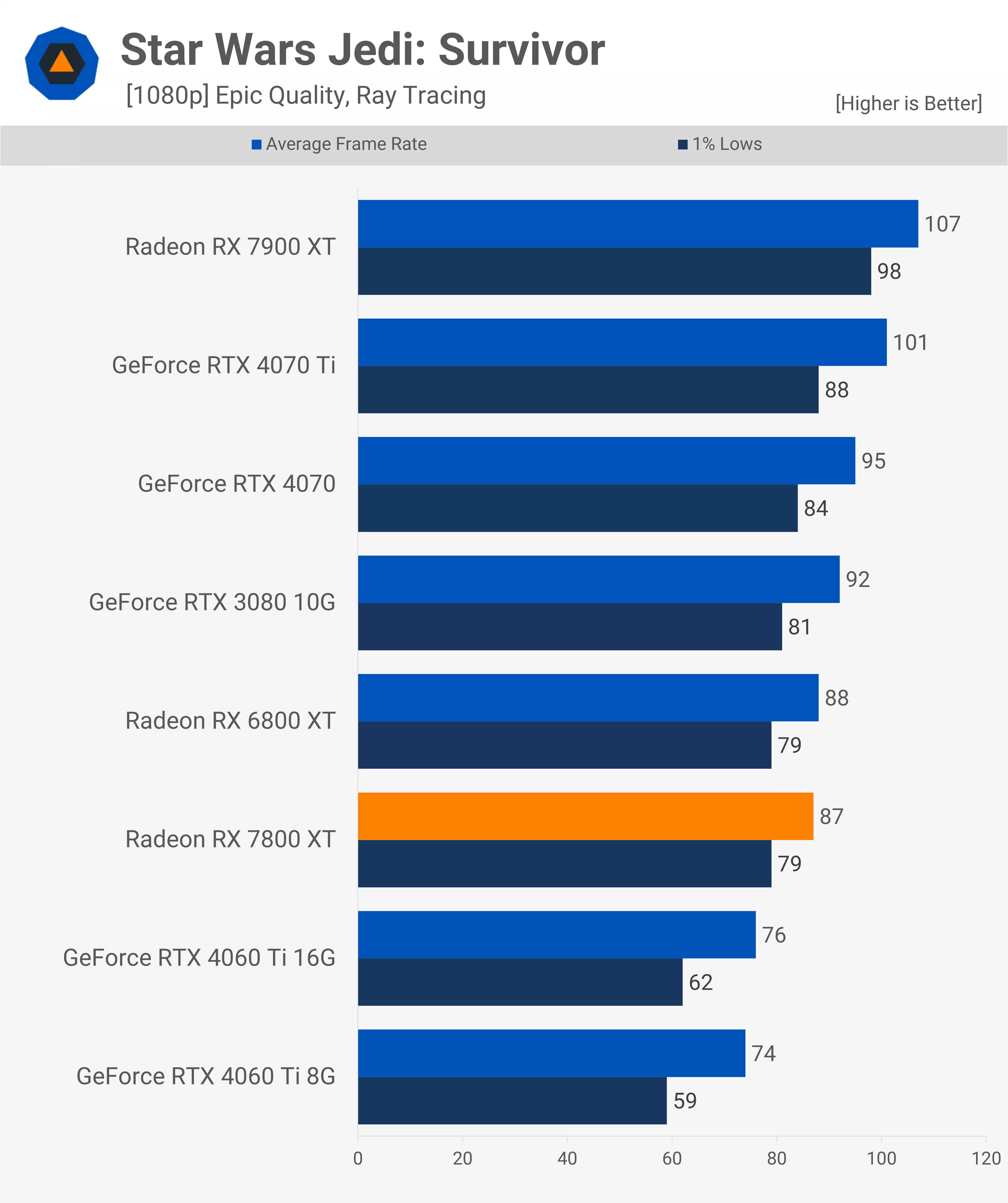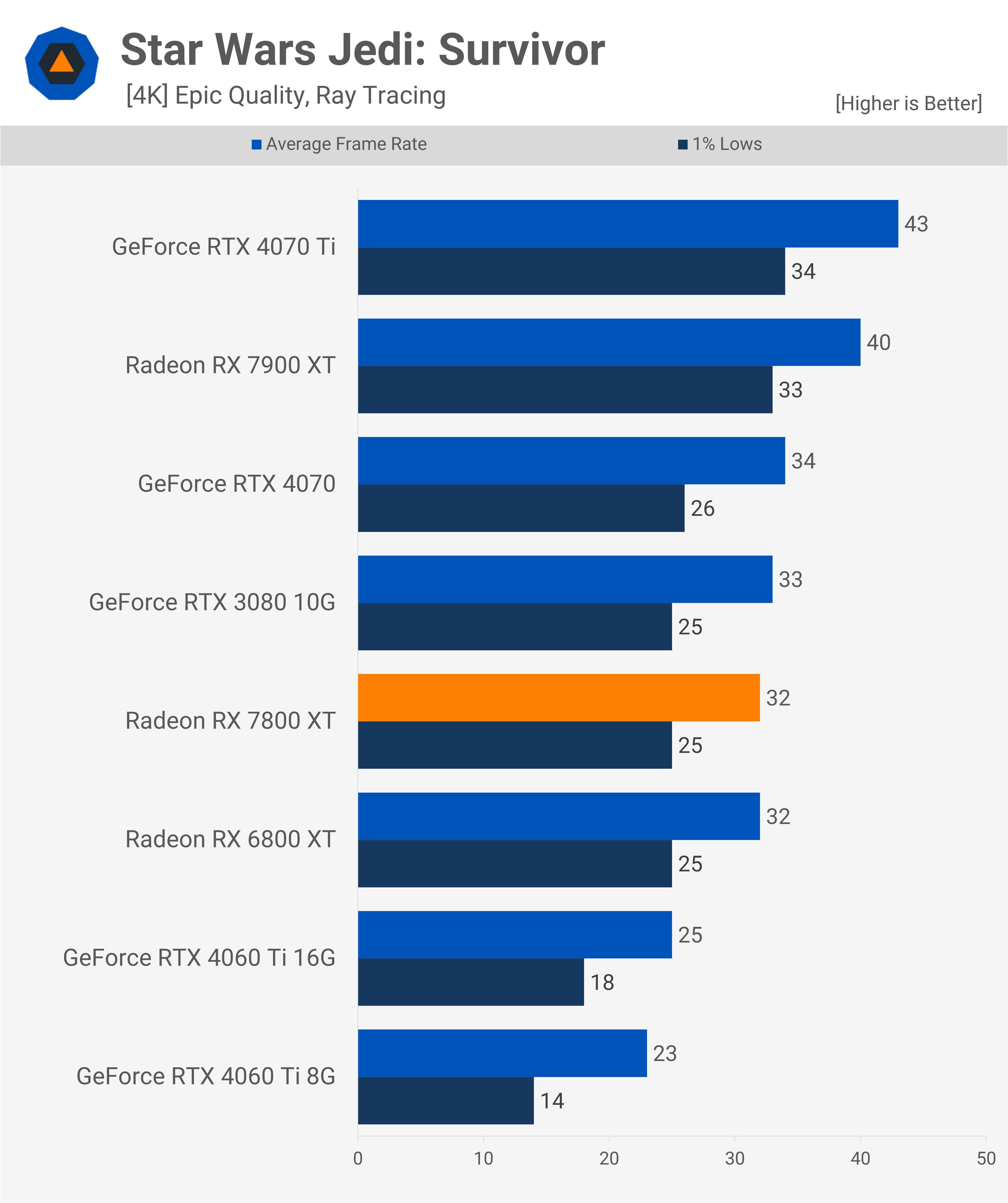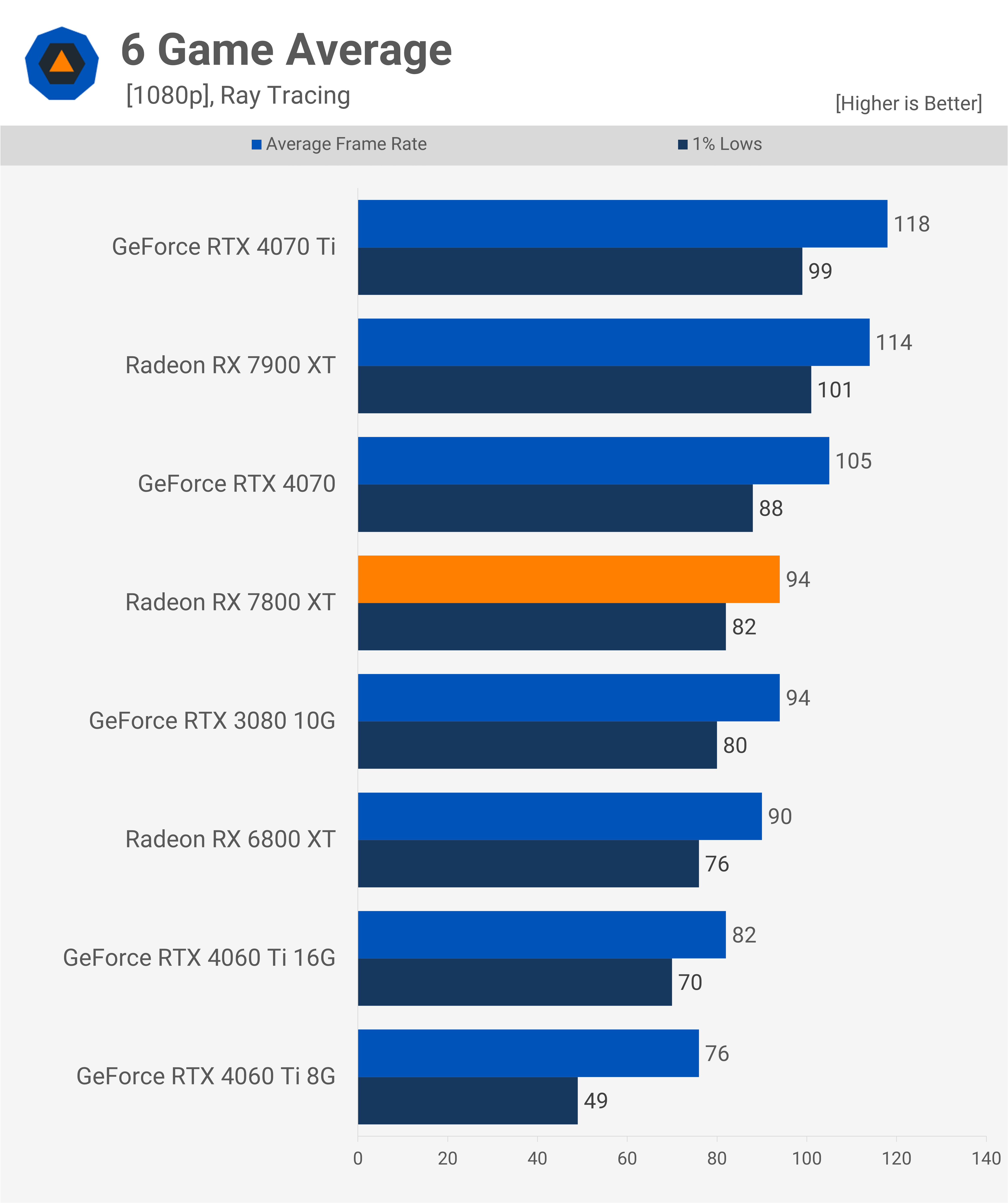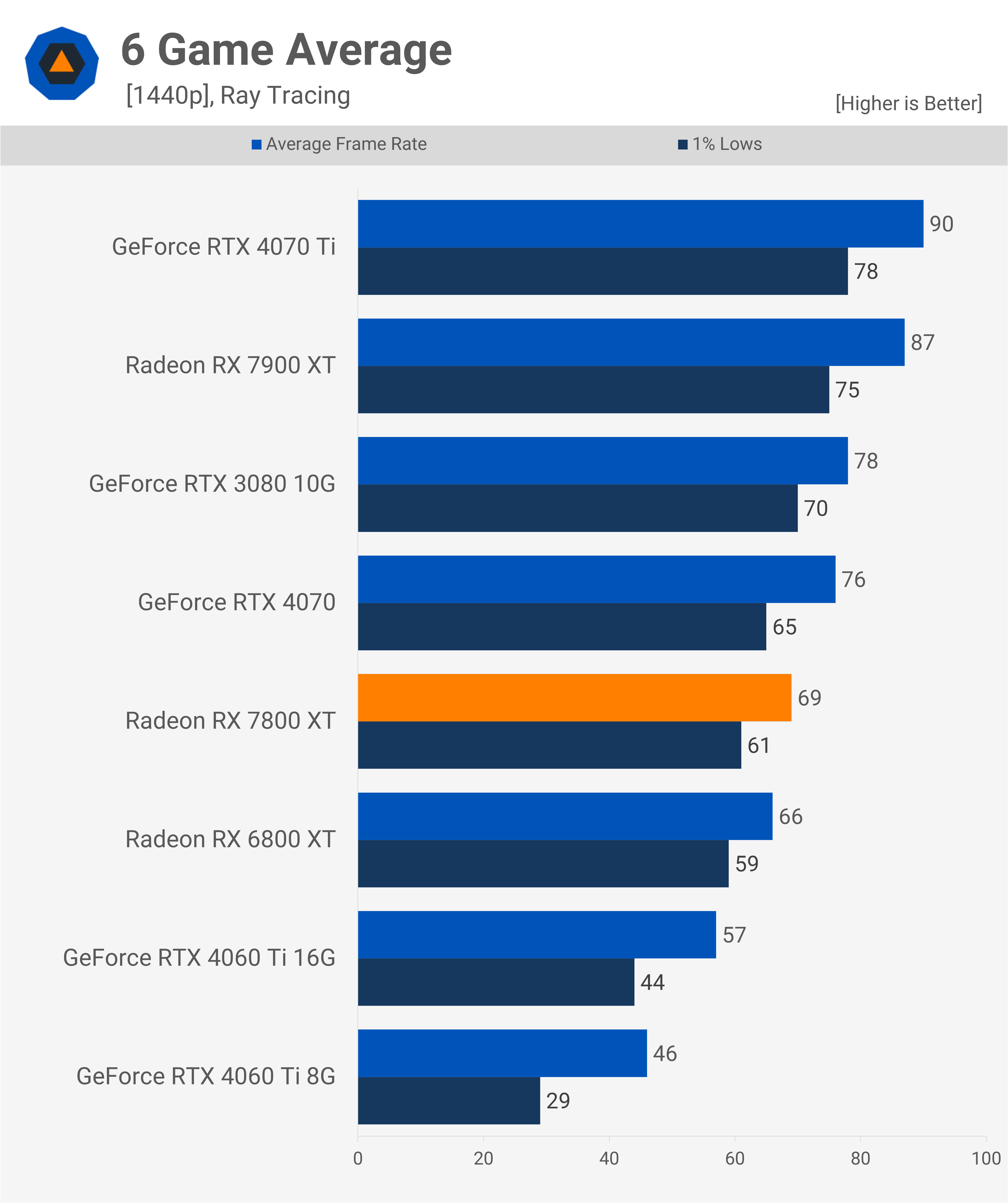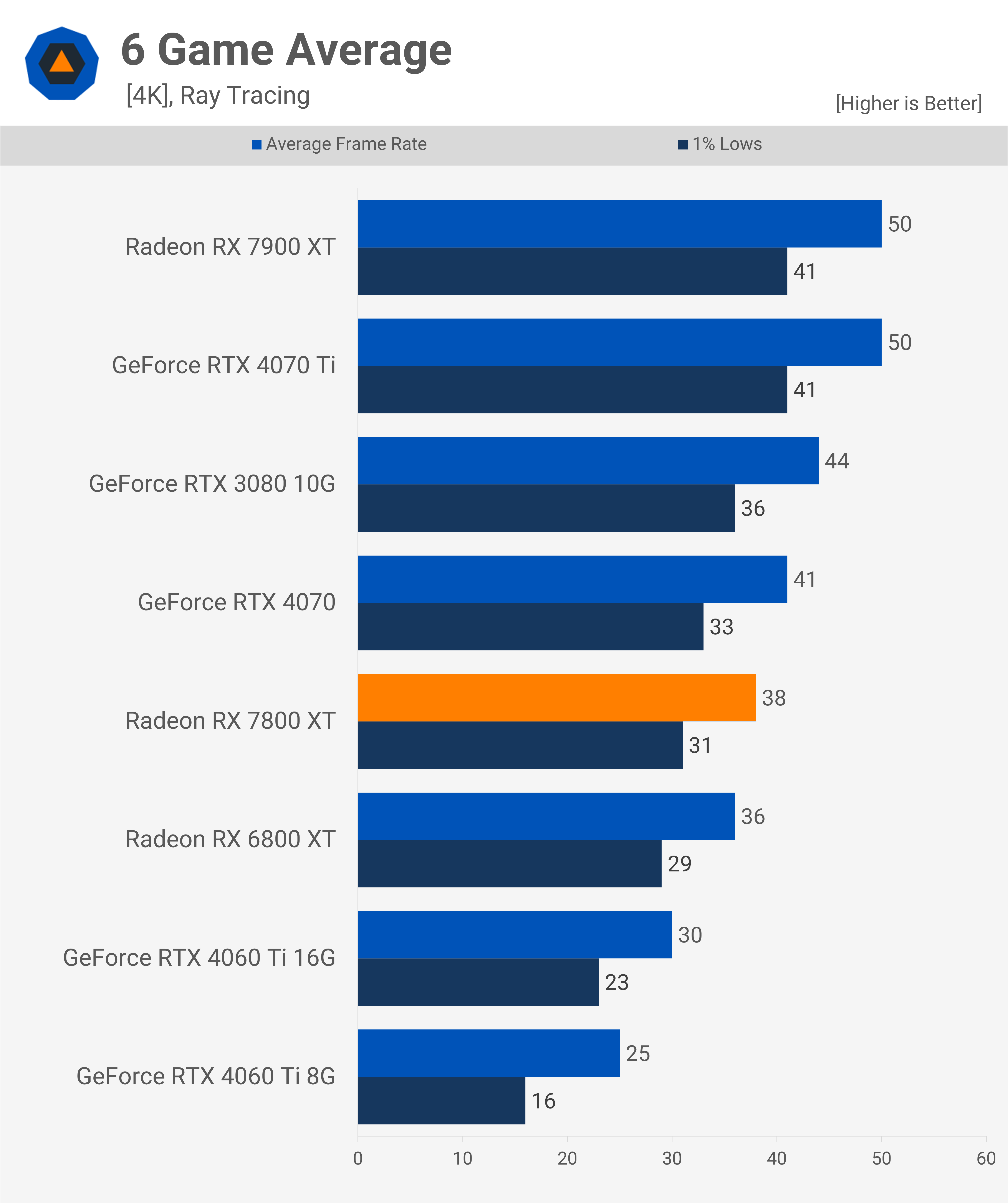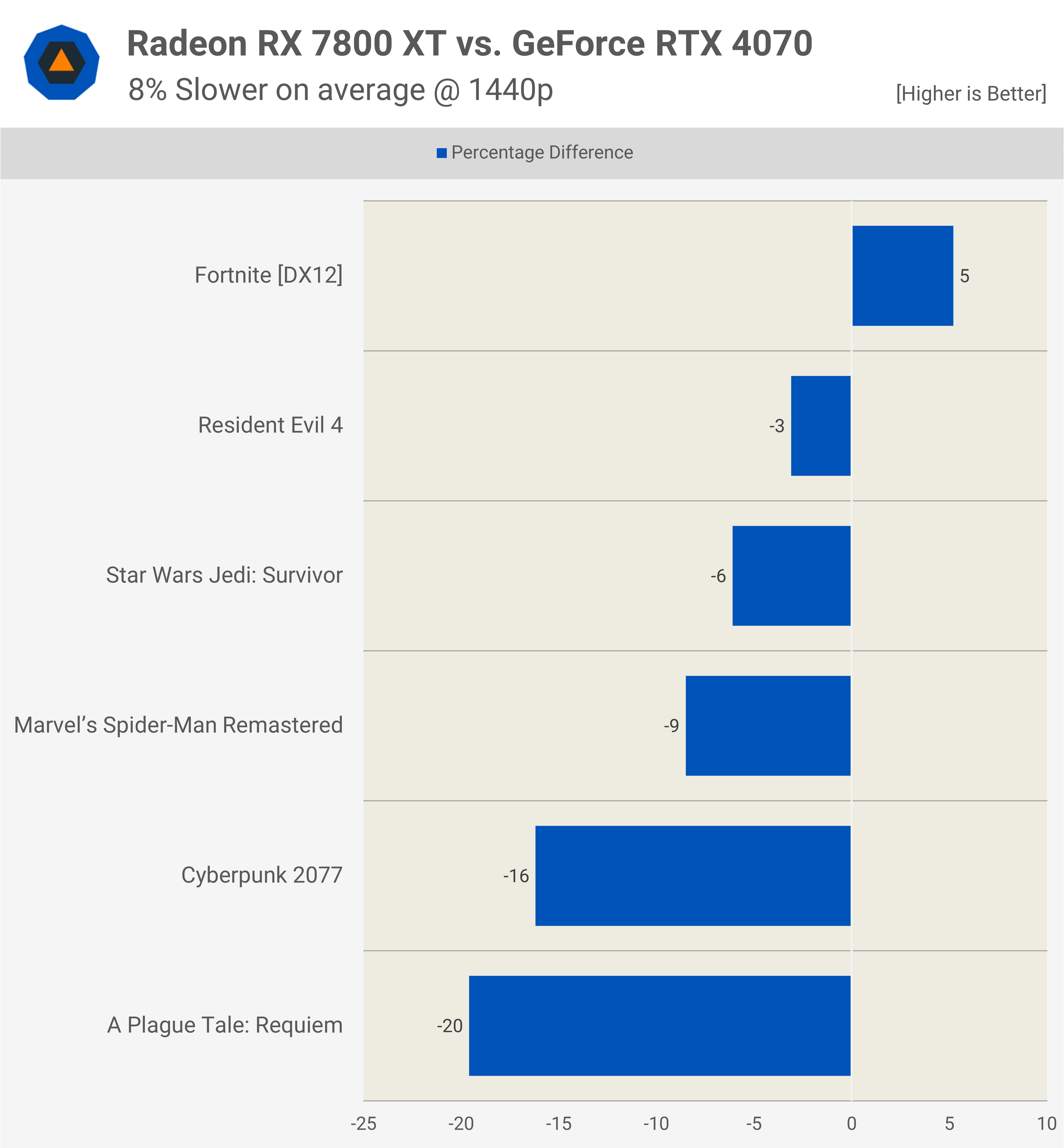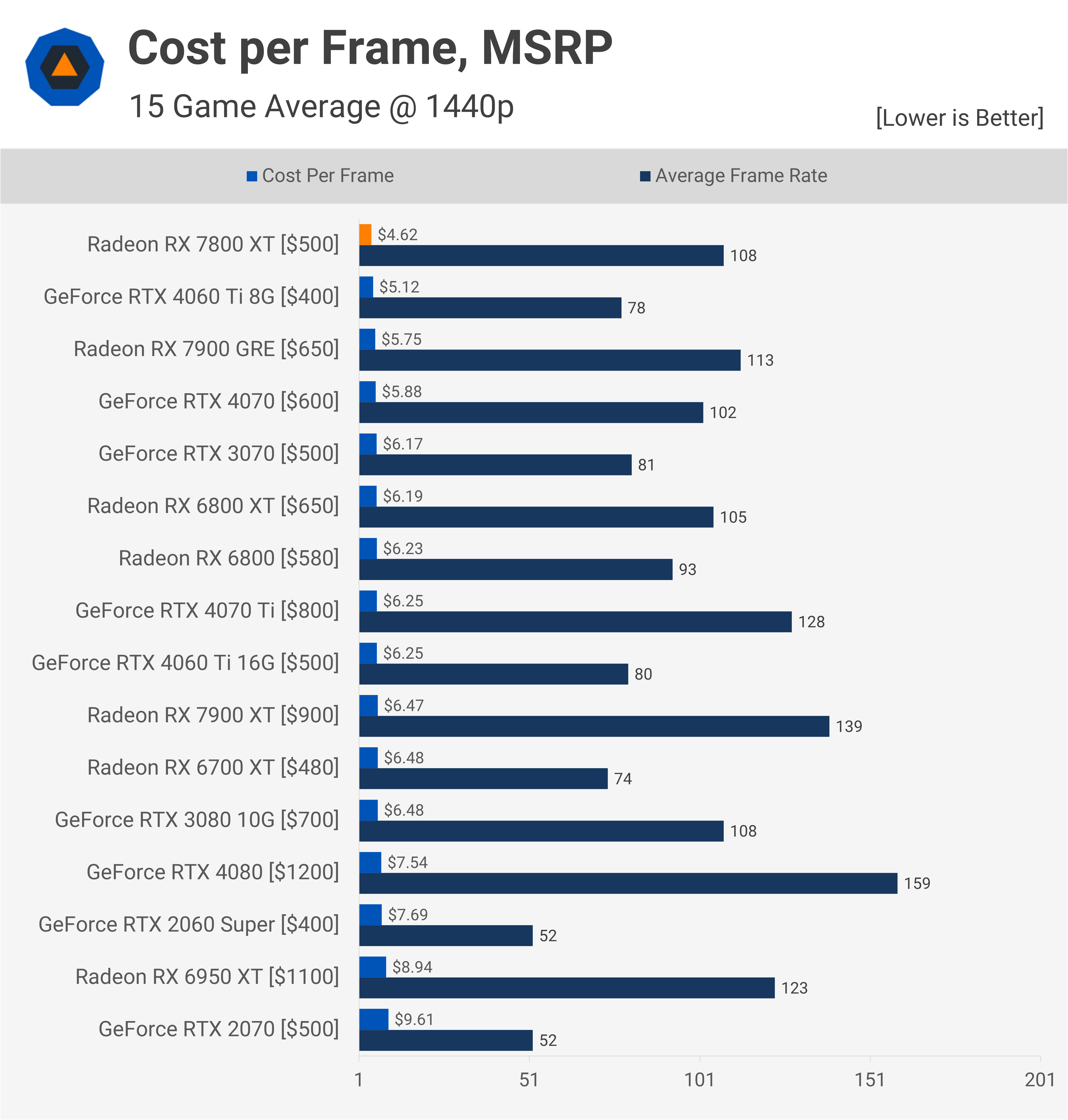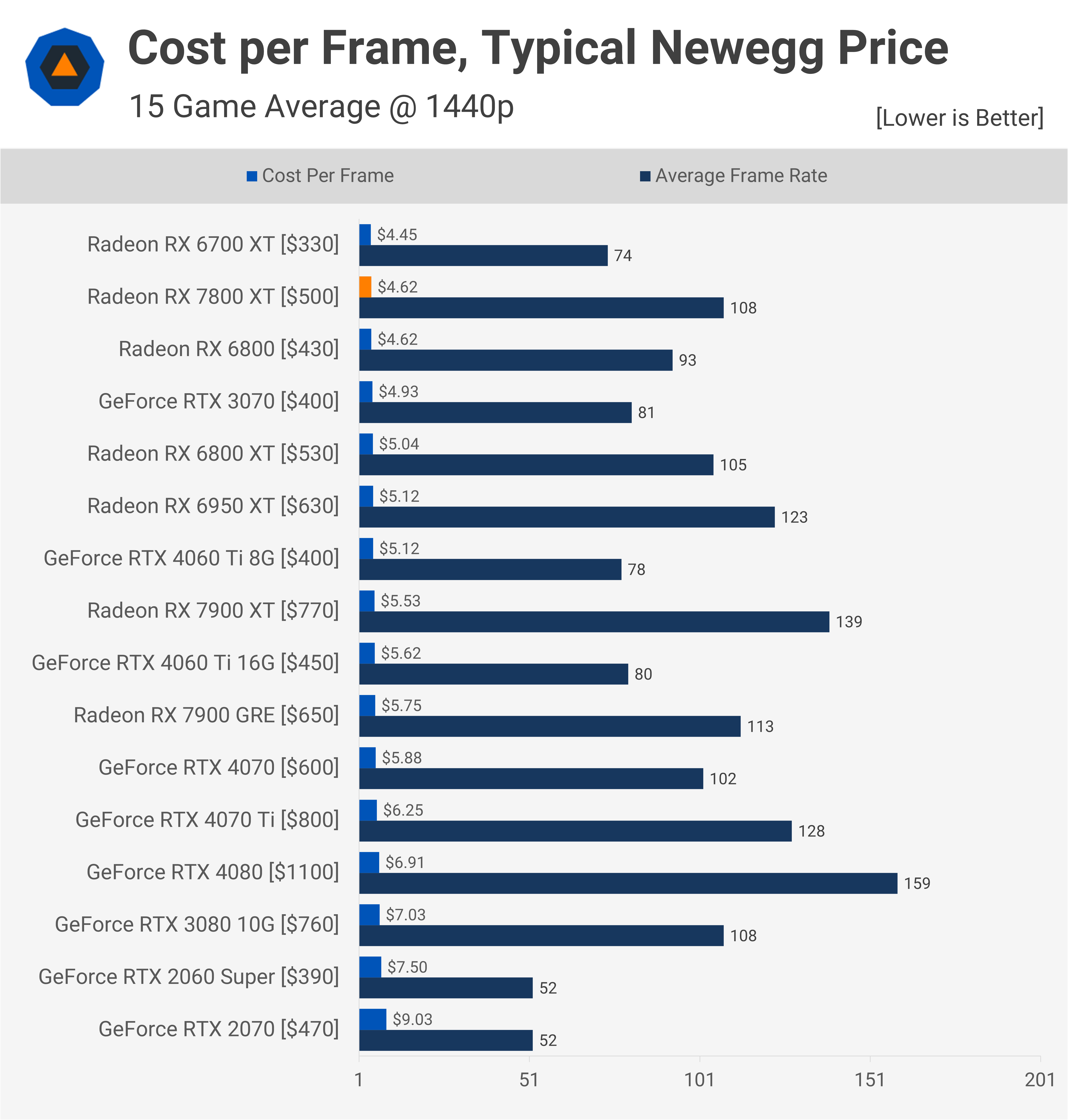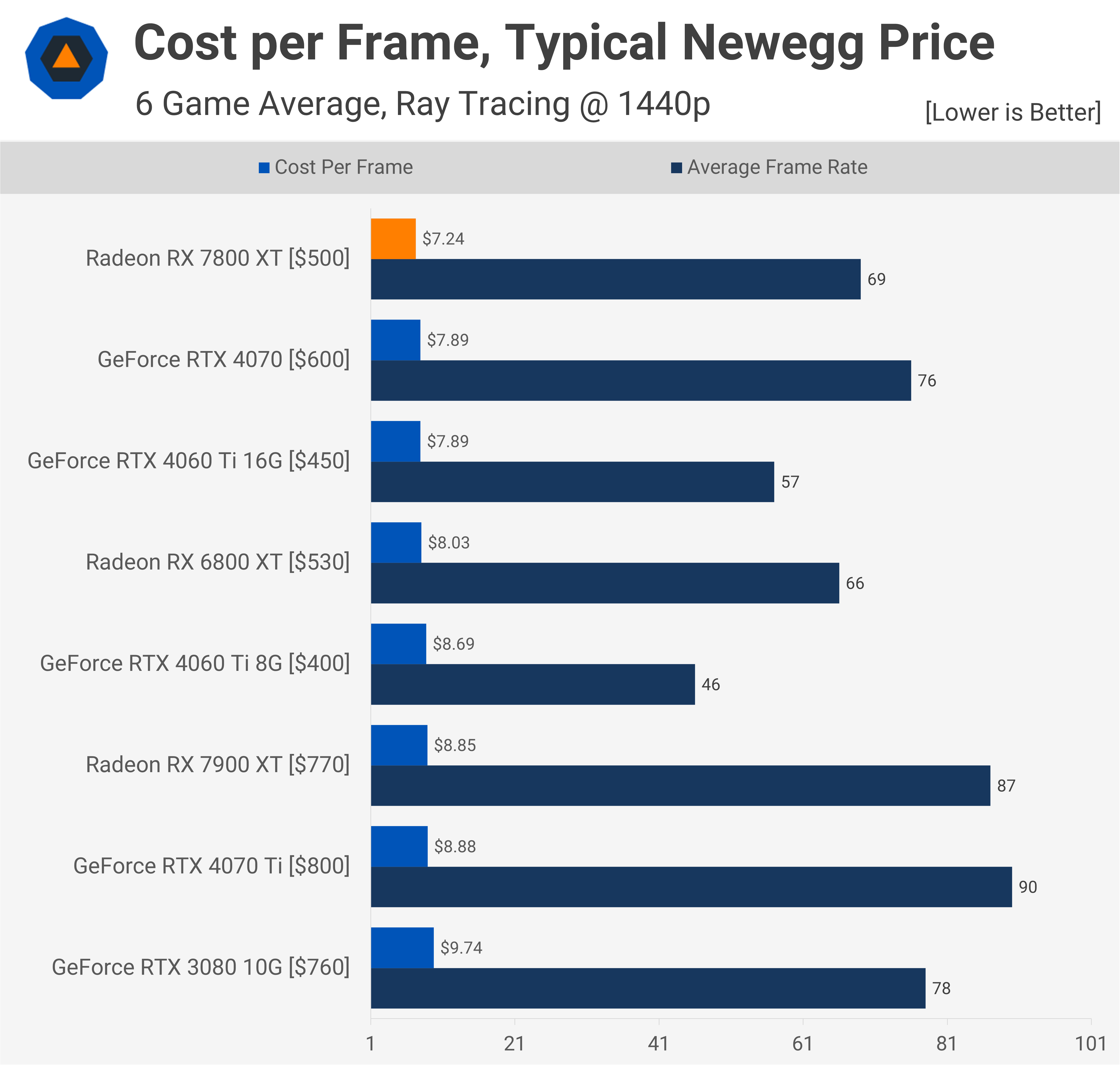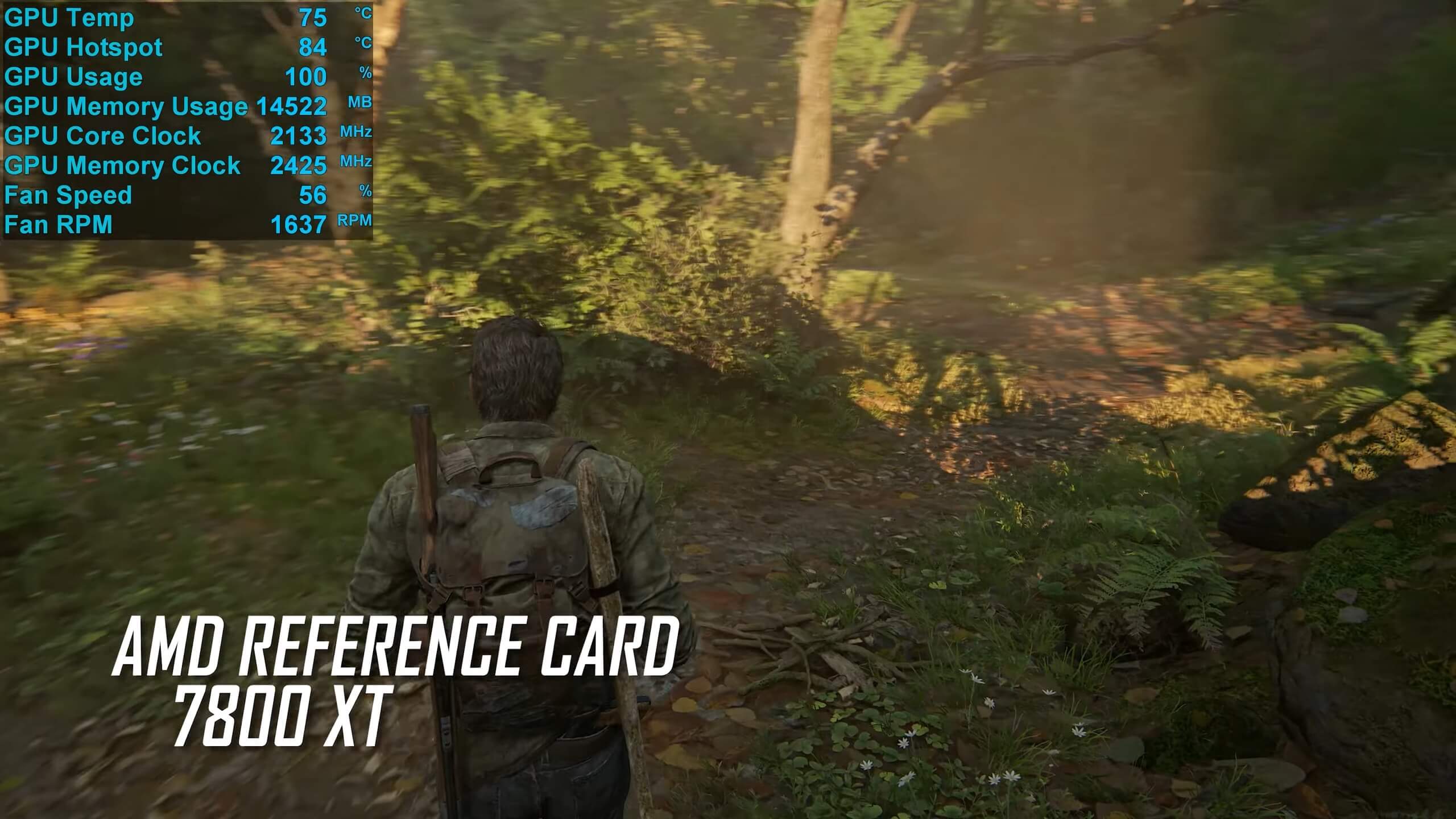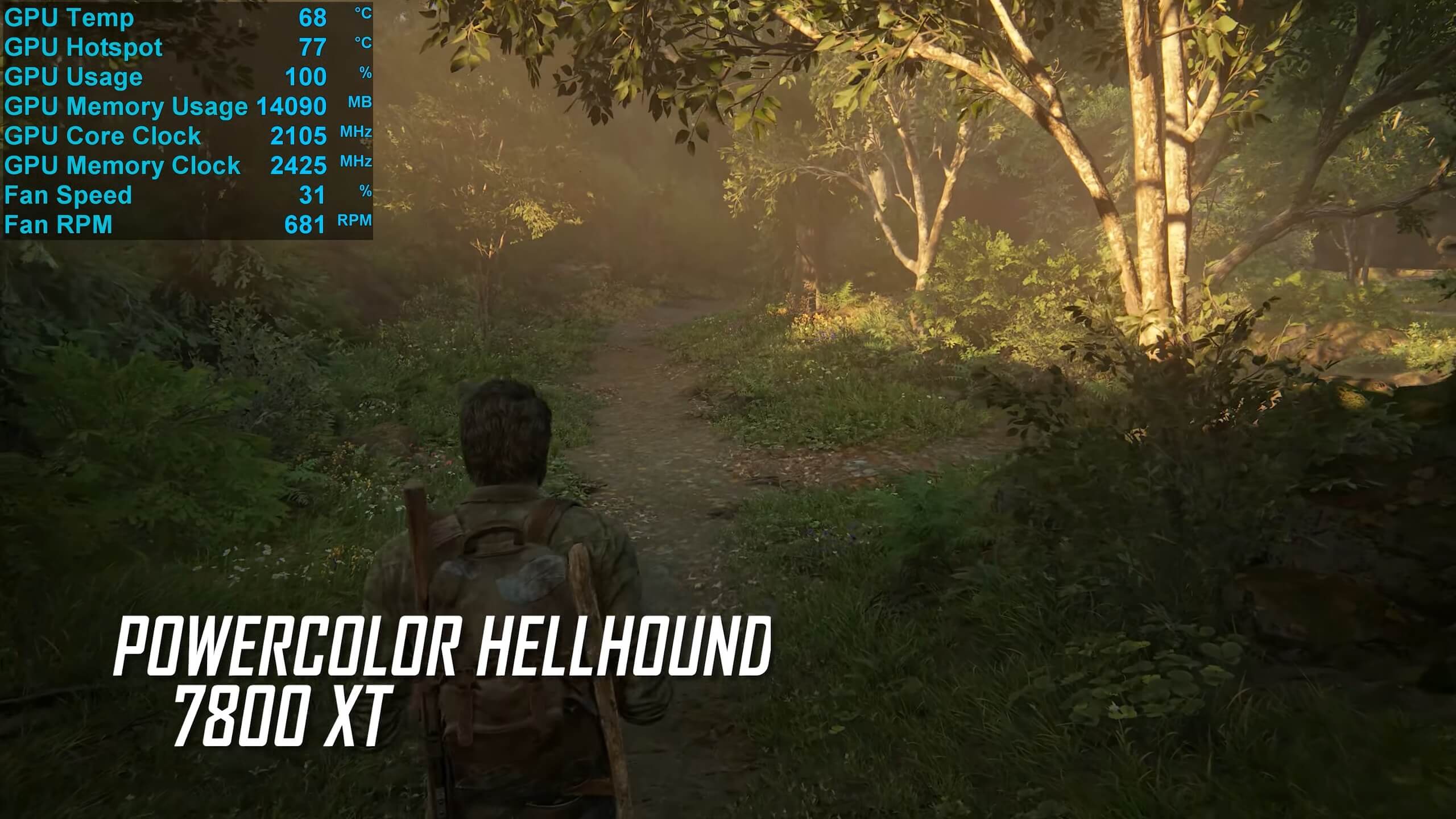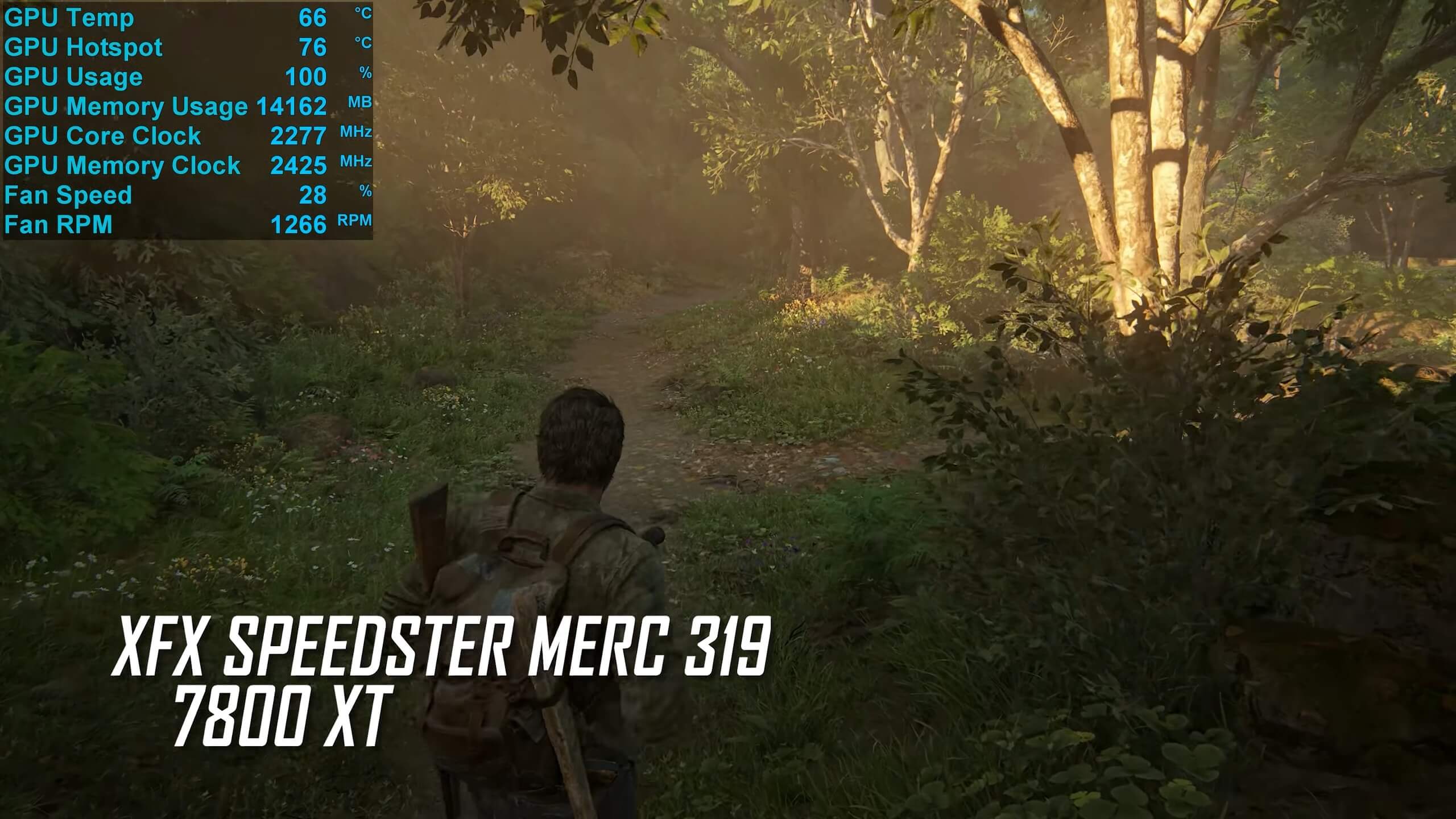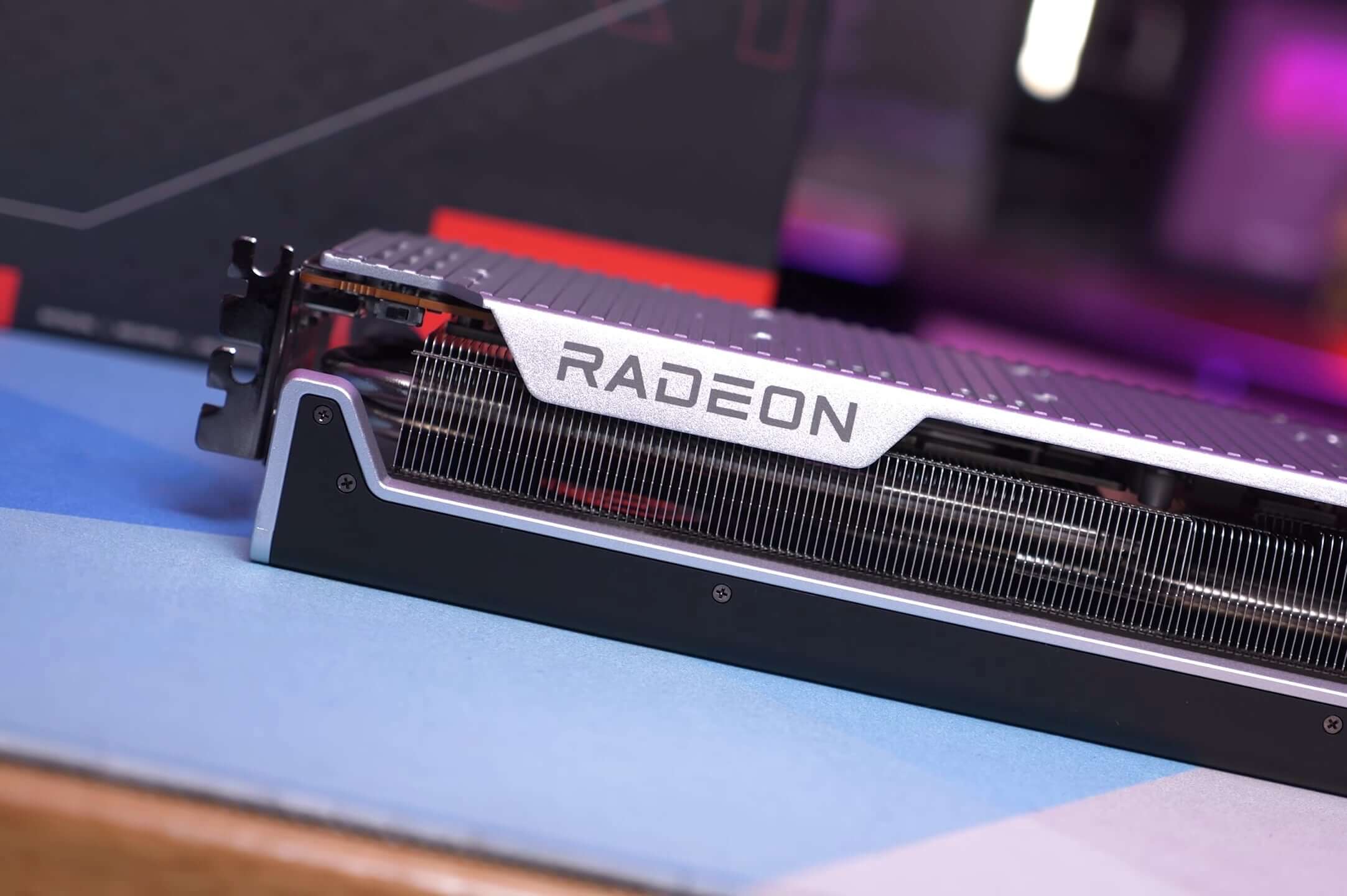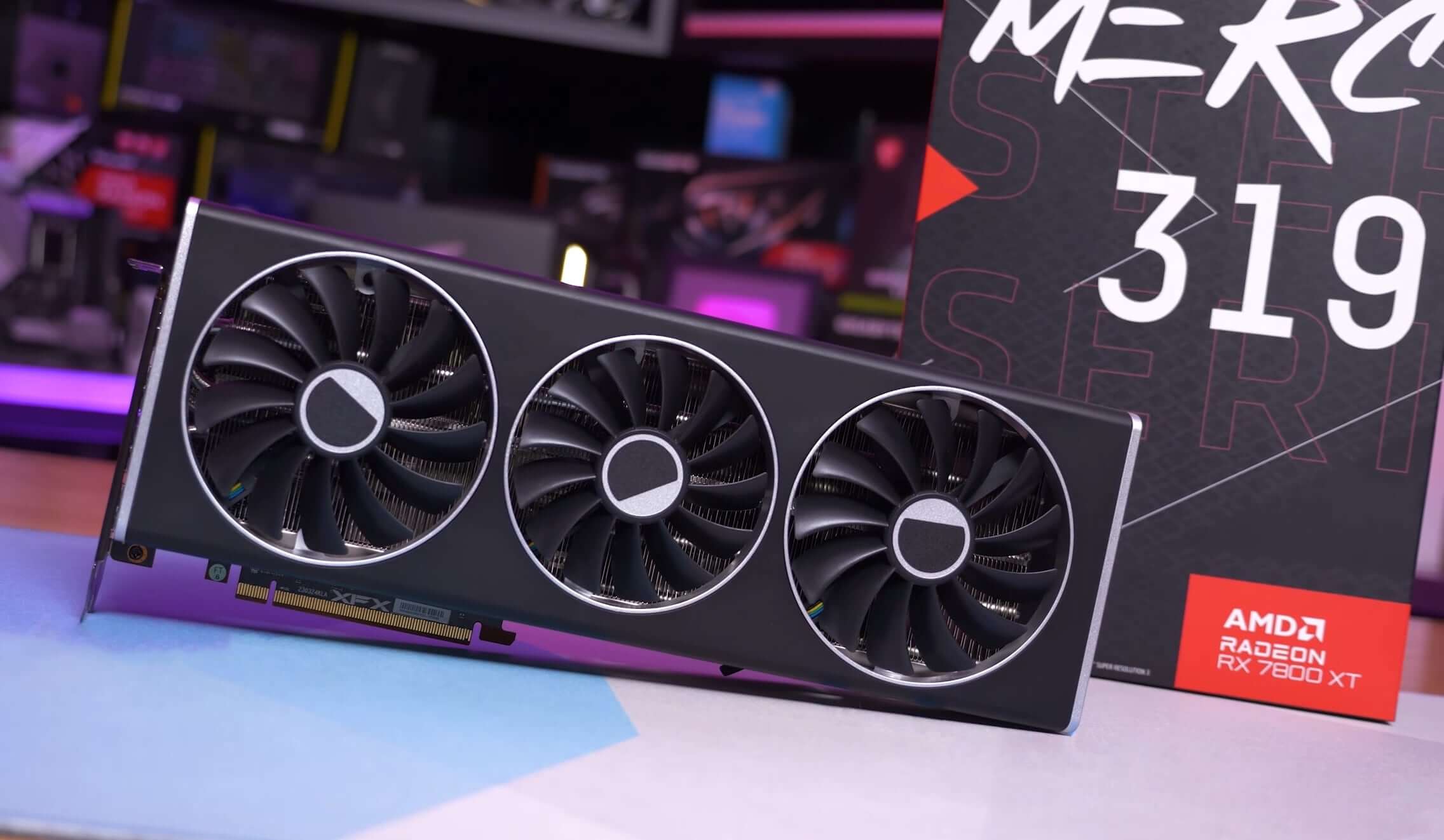It's time to take a look at AMD's new Radeon RX 7800 XT, though at this point it's hard to think of the 7800 XT as "new." Although this is the first time we've been able to show it, the first AMD RDNA 3-based GPUs were released last year, back in December 2022, when we got the 7900 XT and XTX.
That's pretty crazy, and we don't think there's ever been a time before where AMD or Nvidia took 9 months to release the bulk of their product stack in the same series. Normally, after 9 months, we'd be looking at refreshed or updated products, not a continuation of the initial release cycle.
But here we are. AMD is finally releasing the successor to the impressive 3-year-old 6800 XT. So, what have they got for us? Well, on paper, they look quite similar, and it's hard to imagine the 7800 XT will be much, if any, step forward.
The core count has been reduced by 17%, though the cores are clocking 8% higher. Based on that alone, one might expect the 7800 XT to be slower. Thankfully, some upgrades to the memory system have been made. The Infinity Cache capacity has been halved, but the bandwidth has been increased by 63%. We also see that while the same 256-bit wide memory bus is in use, the newer model receives faster 19.5 Gbps memory, which has increased the memory bandwidth by 22%.
So, with significantly more cache and memory bandwidth, the 7800 XT's fewer cores will be able to work much harder. However, it's still challenging to imagine it being much faster than the 6800 XT in most games.
What we find most interesting about the 7800 XT is its price: just $500, which is much lower than the $600 we were expecting. This is also at odds with the rest of the RDNA 3 lineup. The 7900 XTX, for example, costs $10.41 per Cluster Unit, and the XT version was a bit steeper at $10.71. The 7800 XT, however, comes in at $8.33 per CU, a 20% discount when compared to the XTX.
Basically, AMD had two options: either price the 7800 XT in line with the 7900 series, resulting in poor reviews and sales, forcing them to drop prices – a situation reminiscent of what we saw with the 7900 XT. This was the outcome we would have predicted, given AMD's track record with market trends.
The second option was to read the room, face reality, and price the 7800 XT accordingly – an outcome we viewed as less likely. This option would see them pricing the 7800 XT well below the expected $600 asking price to something much more acceptable like $500. And, lo and behold, that's what they did.
We did mention in our most recent monthly GPU pricing update that if the 7800 XT were to deliver 6800 XT-like performance, it should be priced no higher than $450. And while we've yet to examine the performance in detail, the 7800 XT's pricing comes much closer to our ideal, especially when compared to other current generation GPUs from AMD and Nvidia.
For testing, we're using our Ryzen 7 7800X3D test system with 32GB of DDR5-6000 memory and the latest display drivers. All data has been validated and updated for this review. We'll be using the AMD reference version of the 7800 XT.
In total, we've tested 16 games, but we'll only discuss the individual results for about a dozen of them, both with and without ray tracing. Afterward, we'll analyze the average performance and, of course, the cost per frame data. Let's dive into the results...
Benchmarks
Starting with A Plague Tale: Requiem, we observe that the new 7800 XT delivers performance similar to the 6800 XT at 1080p, making it slightly faster than the RTX 4070 and about on par with the RTX 3080.
At 1440p, we see identical performance to that of the 6800 XT, averaging 88 fps. This makes it 9% faster than the RTX 4070. This performance is nothing revolutionary, but it's also quite reasonable given the $500 MSRP.
At the 4K resolution, the 7800 XT lags behind the 6800 XT by a 12% margin, delivering 51 fps. This is a somewhat disappointing result, even if it beats the RTX 4070 by a significant 11% margin.
For Resident Evil 4, starting with the 1080p data, the 7800 XT once again delivers performance similar to the 6800 XT. It's roughly on par with both the RTX 4070 and RTX 3080.
When we increase the resolution to 1440p, the story remains consistent. The 7800 XT aligns closely with the 6800 XT, making it a few frames faster than the RTX 4070.
At 4K, the 7800 XT continues to provide 6800 XT-level performance, rendering at 74 fps on average, which is 12% faster than the RTX 4070.
With Cyberpunk 2077, we have our first instance where the 7800 XT outperforms the 6800 XT, albeit by a modest 8% at 1080p. This performance was enough to edge out the RTX 4070 by 9%.
At 1440p, the 7800 XT manages 95 fps on average, matching the 7900 GRE. It's 9% faster than the 6800 XT and 16% faster than the RTX 4070.
However, at the 4K resolution, performance drops to 45 fps on average. Yet, the 7800 XT remains 22% faster than the RTX 4070.
In Hogwarts Legacy, the 7800 XT returns to performance levels akin to the 6800 XT, rendering 111 fps and outperforming the RTX 4070 by 16%.
At 1440p, frame rates dip to 88 fps, yet the 7800 XT still manages to be 22% faster than the RTX 4070.
At 4K, the advantage over the RTX 4070 narrows to 13%, and in performance terms, the 7800 XT once again resembles the 6800 XT.
In Forza Horizon 5, the 7800 XT again shows performance similar to the 6800 XT, placing it slightly ahead of the RTX 4070.
At the 1440p resolution, the 7800 XT clocks in at 140 fps, just 2 fps faster than the 6800 XT. This means it's 8% faster than the RTX 4070.
When we move to 4K, the 7800 XT achieves 101 fps. This represents a 12% improvement over the RTX 4070 and a slight 4% edge over the 6800 XT.
Spider-Man Remastered is a unique case where the 7800 XT significantly outpaces the 6800 XT by 11% at 1080p. However, it still falls just short of the RTX 4070.
At 1440p, the advantage over the 6800 XT reduces to 8%, and it's a marginal 3% behind the RTX 4070. However, the 1% lows are notably better.
At 4K, the 7800 XT is only 6% faster than the 6800 XT and just 2% behind the RTX 4070.
For The Last of Us Part I, the 7800 XT achieves 111 fps at 1080p, besting the 6800 XT by a slim 5% margin. This means it's 10% faster than the RTX 4070.
At 1440p, we observe 81 fps on average, which is a 7% uplift over both the 6800 XT and RTX 3080, and an impressive 11% improvement over the RTX 4070.
At 4K, the 7800 XT matches the performance of the RTX 3080 and is a frame behind the 7900 GRE and two frames behind the 6950 XT. It's also 7% ahead of the 6800 XT and a significant 26% faster than the RTX 4070.
Finally, for Fortnite, the 7800 XT doesn't fare too well. It lags significantly behind the 7900 GRE and 6800 XT, trailing by 14% at 1080p. This 14% performance deficit compared to the 6800 XT persists at 1440p. Consequently, the 7800 XT falls 16% behind the RTX 4060.
At 4K, the 7800 XT is 9% slower than the 6800 XT and 10% behind the RTX 4070. These numbers are somewhat disappointing for the 7800 XT when considering "Fortnite" performance.
Performance Summary
Here's a look at our 15 game average which largely focuses on rasterization performance, but not entirely considering Forza Horizon 5 and F1 22 were tested using the maximum quality preset which enables ray tracing by default, but we'll look at more RT focused data shortly.
For now, we see that at 1080p the 7800 XT is generally just a 6800 XT in terms of performance, which also meant it was comparable with the RTX 3080 and RTX 4070, beating the more expensive 4070 by a 3% margin.
We're of course seeing much the same at 1440p, the 7800 XT was a whisker slower than the 7900 GRE, which meant it was just a few frames faster than the 6800 XT, so another 3% uplift in this example. Still despite being $100 cheaper than the RTX 4070, the 7800 XT was 6% faster on average, so at least relative to Nvidia's current generation offerings, the 7800 XT does look very good.
Now at the 4K resolution the 7800 XT and 6800 XT were neck and neck but even so the new $500 Radeon GPU was still 9% faster than the RTX 4070. So while pretty exciting when compared to the 6800 XT, if you're coming from a much older GPU the 7800 XT might actually be of interest.
Ray Tracing Benchmarks
Alright, let's revisit performance in A Plague Tale: Requiem, but this time with ray tracing enabled. With RT activated, the 7800 XT averaged 67 fps at 1080p, marking a 6% improvement over the 6800 XT but lagging 26% behind the RTX 4070.
The gap narrowed to 20% at 1440p. This is still a significant performance edge for the GeForce GPU, especially considering it's priced 20% higher.
At 4K, the 7800 XT averaged 30 fps, a 25% dip in performance compared to the RTX 4070, yet it showed performance similar to the 6800 XT.
Switching to Resident Evil 4 with the ray tracing quality preset, the 7800 XT averaged 157 fps at 1080p. This made it 10% faster than the 6800 XT and on par with the RTX 4070.
At 1440p, it slightly lagged, trailing the 4070 by just 3% but was also a mere 3% ahead of the 6800 XT.
At 4K, the 7800 XT provided a very playable 75 fps, equating to the RTX 3080, the 6800 XT, and the RTX 4070.
In Cyberpunk 2077, AMD's Ray Tracing performance doesn't quite measure up. The 7800 XT trailed the RTX 4070 by a 22% margin at 1080p, averaging 58 fps, using the medium quality ray tracing preset. However, the 7800 XT is priced similarly to the 16GB RTX 4060 Ti, matching its performance.
The 7800 XT averaged a modest 36 fps at 1440p, 16% behind the 4070, but surpassed the 6800 XT by 6% and the RTX 4060 Ti 16GB by 9%.
At 4K, none of the tested GPUs managed to deliver satisfactory performance at the native resolution.
Spider-Man Remastered's ray tracing performance is generally quite good, and this is evident with the 7800 XT at 1080p. Averaging 148 fps, it paralleled the 6800 XT and was just 5% behind the RTX 4070.
At 1440p, the new Radeon GPU lagged 9% behind the 4070, averaging 128 fps, yet it outperformed the 6800 XT by 7%.
At 4K, the 7800 XT averaged 76 fps, matching the 6800 XT and trailing the RTX 4070 by 8%.
The penultimate game we evaluated for ray tracing performance was Fortnite. Here, the 7800 XT surpassed the RTX 4070 at 1080p by 7%, reaching 90 fps. This also marked a 7% improvement over the 6800 XT.
The lead over the RTX 4070 decreased to 5% at 1440p, with the 7800 XT averaging 60 fps, a 9% increase over the 6800 XT.
At 4K, using native resolution without upscaling, both the 7800 XT and RTX 4070 managed just 30 fps.
Lastly, in Star Wars Jedi: Survivor, the 7800 XT achieved an average of 87 fps, mirroring the performance of the 6800 XT. This placed the new Radeon GPU 8% behind the RTX 4070 but 14% ahead of the RTX 4060 Ti 16GB.
At 1440p, the 7800 XT was 6% slower than the RTX 4070, averaging 61 fps – equivalent to the performance of both the 6800 XT and RTX 3080.
At native 4K, the average dropped to 32 fps, matching the RTX 3080 and 6800 XT, and approximately 6% behind the RTX 4070.
Ray Tracing: Performance Averages
Across the six titles tested with ray tracing enabled, we found that at 1080p, the 7800 XT averaged 10% slower performance than the RTX 4070, matched the RTX 3080, and was slightly faster than the 6800 XT. Notably, it outpaced the similarly-priced RTX 4060 Ti 16GB by 15%, marking a significant win for the new Radeon GPU.
At 1440p, the 7800 XT averaged 69 fps, making it 9% slower than the RTX 4070 but 5% faster than the 6800 XT.
For enthusiasts wanting to harness ray tracing effects at 4K with these GPUs, achieving this at native resolution is not feasible and undeniably requires upscaling assistance. Nevertheless, compared to the RTX 4070, the 7800 XT fares reasonably, being only 7% slower.
Radeon RX 7800 XT vs. Radeon RX 6800 XT
Taking a deeper dive into the comparison between the 7800 XT and 6800 XT across the 15 games tested at 1440p – as observed, the 7800 XT is on average just 3% faster. But, the results present an intriguing variance.
The newer RDNA 3 GPU had its challenges in Fortnite and Dying Light 2, while in about half of the titles, it offered no substantial improvement. Notable victories were recorded in Call of Duty Modern Warfare 2 and Warhammer III.
Comparing the 6800 XT and 7800 XT directly across the six RT titles, the newer RDNA 3 GPU offers, on average, a 5% performance boost. While this might not seem monumental, the real victory lies in its pricing, which we'll delve into shortly.
Radeon RX 7800 XT vs. GeForce RTX 4070
Against the RTX 4070, the results were somewhat erratic, although the 7800 XT was 6% faster on average.
The Radeon GPU demonstrated a commanding lead in Modern Warfare II, Hogwarts Legacy, Cyberpunk 2077, and The Last of Us Part 1. However, it faltered in Fortnite and lagged in Hitman 3, Halo Infinite, Spider-Man, and Dying Light 2.
Priced to be 17% cheaper than the RTX 4070, the 7800 XT being only 8% slower on average across the ray tracing tests we examined is impressive. The most significant performance drops were observed in Cyberpunk 2077 and A Plague Tale: Requiem, with the sole victory in Fortnite. Overall, the results are praiseworthy.
Power Consumption
A brief examination of the total system power consumption in Hitman 3 reveals that the 7800 XT reduced consumption by 13% when compared to the 6800 XT while delivering roughly equivalent performance. Though the 7800 XT lagged 4% behind the RTX 4070 in this instance, it increased the total system usage by 15%, a noticeable jump.
In the Spider-Man tests, the 7800 XT fared better. It decreased total system consumption by 9% compared to the 6800 XT, with a modest 12% increase over the RTX 4070. Yet, it's undeniable that the GeForce GPU is more power-efficient.
Cost Per Frame
We've calculated the cost per frame using the MSRP and the results from our 15-game average. As expected the 7800 XT looks quite good, delivering by far the best cost per frame of any current or previous generation GPU that we've tested. In comparison to the 6800 XT, the 7800 XT boasts a 25% decrease in cost per frame and achieves a 21% reduction against the RTX 4070. Although the 7800 XT's performance might not be overwhelming, its price point is certainly not disappointing.
When compared with current retail pricing, the 7800 XT fares exceptionally well, equating the value of the significantly discounted RX 6800. It may not be revolutionary, but it's notably superior to our anticipations before AMD's pricing announcement. When set against the heavily discounted $530 6800 XT, the new 7800 XT still offers 8% better value. Moreover, a 21% improvement over the RTX 4070 is excellent.
Should we consider only the ray-tracing data, our observations would be based on the MSRP. The 7800 XT continues to outshine the RTX 4070, slashing the cost per frame by 8%. It's a considerable 26% more valuable than the 6800 XT, presuming the 6800 XT retailed at $650.
However, with the 6800 XT's discounted price of $530, the 7800 XT holds a 10% advantage. While this isn't negligible, it doesn't represent a significant generational jump. It's somewhat surprising that even after three years, there remains an abundance of RDNA 2 stock – a slight miscalculation by the inventory team.
Cooling Performance
Before we wrap up this review, let's discuss the operational behavior of the AMD reference model. After an hour of in-game activity, it reached a junction temperature of 75°C with a maximum hotspot of 85°C. The results are fairly positive, although the fans, spinning at 1,600 RPM, were discernibly louder than the case fans.
Regarding the cores, they clocked at an average of 2,160 MHz during tests in The Last of Us Part 1 at 4K with high-quality settings, consuming a significant amount of VRAM.
PowerColor's Hellhound variant, substantially larger than the reference model, boasts superior operational behavior. The GPU's junction temperature peaked at a mere 68°C, with a maximum hotspot temperature of 77°C – 8°C cooler than AMD's reference card.
Its three fans operated at a quiet 650 RPM, rendering the Hellhound almost silent, overshadowing even the system's noise. However, the cores averaged at 2,080 MHz during our tests, marking a 4% decline from the AMD reference model.
Lastly, the XFX Mercury 319 model recorded a peak junction temperature of 67°C and a hotspot of 77°C, aligning with the Hellhound's readings. But the Merc 319 showcased superior clocking, typically operating at 2,270 MHz, a substantial 9% above the Hellhound. Its fans ran at 1,200 RPM, yet the card remained nearly silent. Such a 9% discrepancy in clock rates is larger than typically anticipated.
Hot or Not?
After all that data, we suspect many of you will find the numbers to be somewhat disappointing. Given that the Radeon 7800 XT mirrors the 6800 XT in terms of performance, it's not particularly thrilling, especially after 3 years. It's almost borderline embarrassing for AMD. The GPU's only redeeming feature seems to be its price: at $500, the 7800 XT will likely become the go-to option for many.
Looking at our cost-per-frame graph, it's clear why we suggested a $450 asking price for the 7800 XT. Such a price point would undoubtedly make it the best purchase. However, it's also clear why AMD didn't lower the price further. At $500, there's no better value than the 7800 XT.
There's no incentive to opt for the RX 6800 at $430, and with a $530 price point, the 6800 XT loses its appeal. Before the 7800 XT's debut, one could have advocated for the 6800 XT over the RTX 4070. However, many would willingly spend an additional $70 on the GeForce GPU for enhanced power efficiency, AV1 support, better ray tracing performance, and DLSS 3. A 13% premium for these features seems justified.
But when compared to the Radeon 7800 XT, the RTX 4070 is 20% more expensive. Both support AV1 encoding, but the gaps in ray tracing and power efficiency have diminished. This leaves DLSS as the primary attraction of the GeForce GPU. AMD has extensively discussed FSR 3 and made some bold statements. However, it remains an upcoming feature, giving the RTX 4070 the "advantage" of DLSS 3.
Frame generation might appeal to only a segment of users. Thus, even when AMD introduces FSR 3, it might not resonate with everyone. Given this, for many gamers, the 7800 XT and RTX 4070 seem very comparable. With the Radeon GPU being $100 cheaper, it's now the obvious option in our opinion.
The bar might not have been set high, but this is still a commendable feat for AMD. The RTX 4070, with more than 8GB of VRAM, represents Nvidia's best value. Yet, the 7800 XT surpasses it, offering better performance and more VRAM at a significantly reduced cost. This release also overshadows the RTX 4060 Ti 16GB, which, to be honest, seemed overpriced at $500 even before the 7800 XT's introduction.
Bottom line, the 7800 XT marks AMD's first "good" launch in their RDNA 3 series, a notable achievement, albeit 9 months post the initial release. The 7800 XT essentially offers a 6800 XT experience at a discounted rate, with minor enhancements. While it might not be groundbreaking, especially after a 3-year gap, it is satisfactory given the generation's trajectory. So, with limited alternatives, we guess we'll take it.
Shopping Shortcuts:
- AMD Radeon RX 7800 XT on Amazon
- Nvidia GeForce RTX 4070 Ti on Amazon
- AMD Radeon RX 7900 XT on Amazon
- Nvidia GeForce RTX 4060 Ti on Amazon
- AMD Radeon RX 7600 on Amazon
- Nvidia GeForce RTX 4080 on Amazon
- Nvidia GeForce RTX 4070 on Amazon
- AMD Radeon RX 7900 XTX on Amazon
- Nvidia GeForce RTX 4090 on Amazon
Further Testing
Since we published this day-one review of the Radeon RX 7800 XT, we have run additional benchmarks and comparisons you may be interested in:
